by Jimmy Mulvihill
Spain is blessed with two world renowned cities in Madrid and Barcelona, and whether you choose the sophistication and capital chic of Madrid or the rebellious Catalan spirit of Barcelona, both make a great base for a holiday; with clubs, bars and restaurants, world class hotels, efficient transportation systems, museums and attractions aplenty. They also both combine the practicality and affordability, great work prospects and activities needed to be realistic options to move to.
Yet Spain’s third biggest city, Valencia, is often overlooked despite the fact that it combines the best of both of it’s larger counterparts, and on a fraction of the budget. With over 800,000 people in the historical city centre, 1.5 million people within it’s city limits and over 2.5 million people within its metropolitan area it is no shrinking violet, and it’s certainty not second rate compared to it’s more recognized rivals. Personally, I think it is by far the best of all of them. Much of what it offers is obvious at first glance, but stay longer than you think you’ll need to and there is a lot more to discover.
With 3 main beaches within walking distance of the city centre, (Arenas, Malvarrosa and El Cabañal) it’s easy to find a place to catch some of the 2,660 hours of sun that Valencia has each year on average.
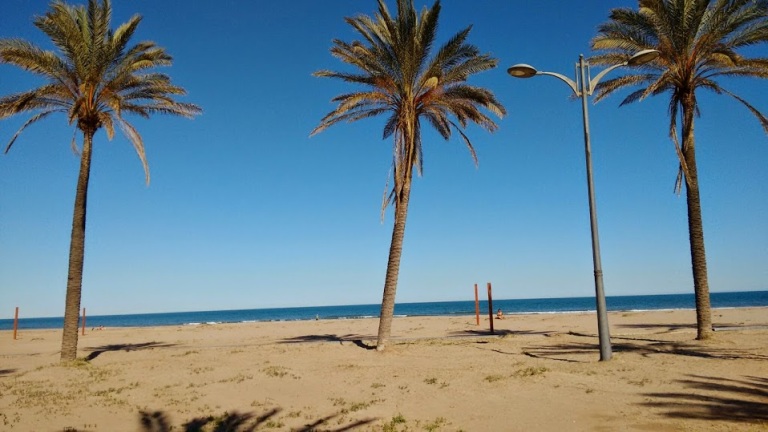
Despite being on the east coat, you’ll still get some amazing sunsets
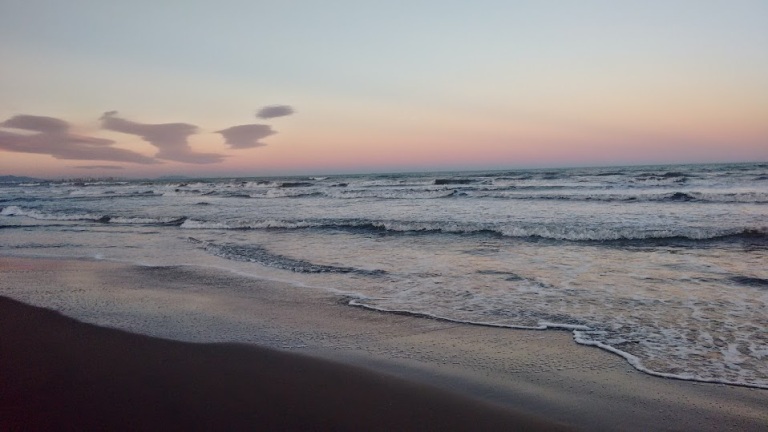
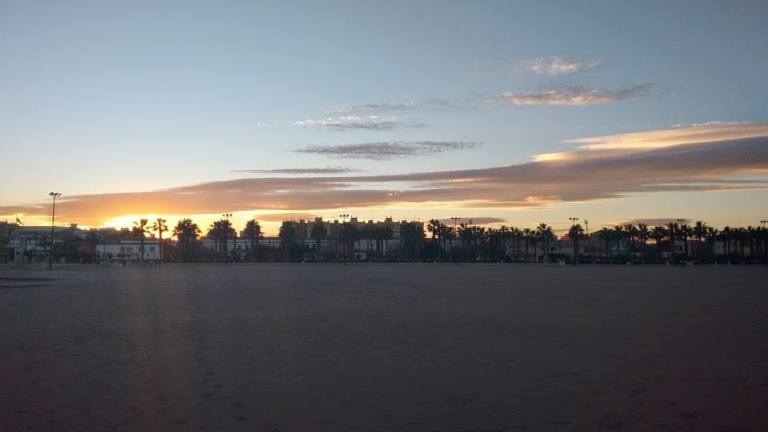
with a promenade that’s easy to stroll without fighting your way through the crowds. Compared to the hustle and bustle of many Spanish beaches, Valencia can offer incredible tranquility.
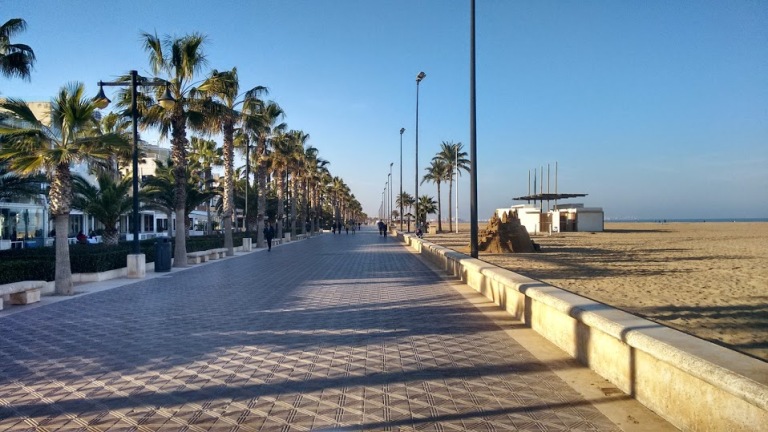
Yet there is also a wide and varied selection of independent restaurants and bars to while away the hours in
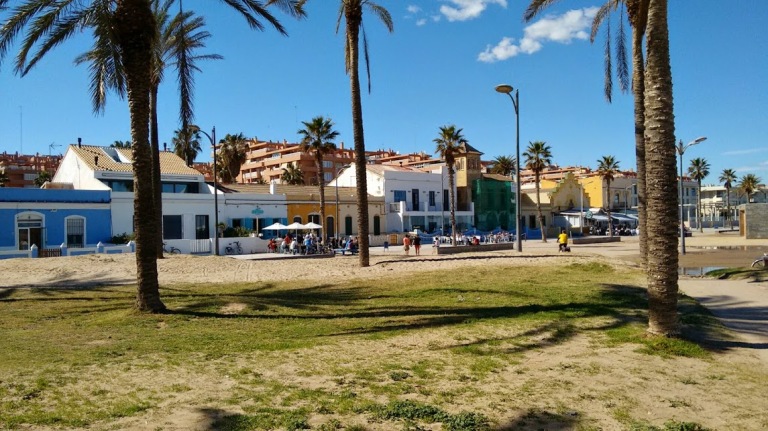
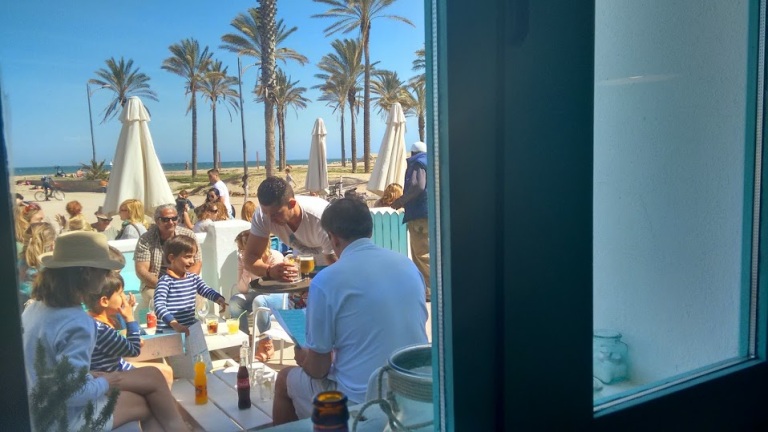
and English style beach huts dotted around.
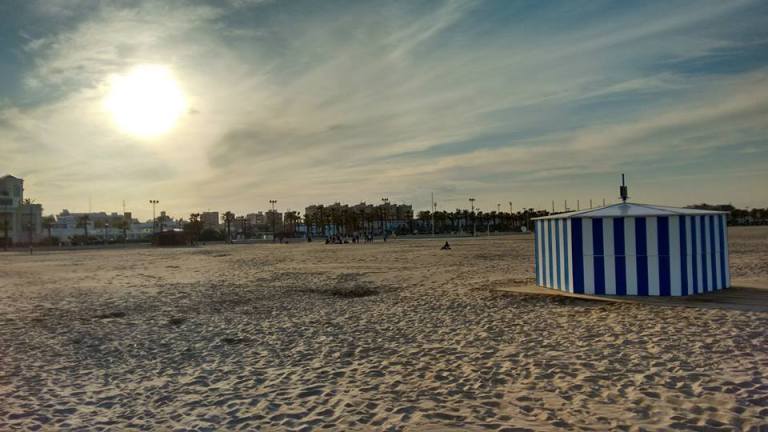
Make the 45 minute walk or 20 minute metro ride from the beach and you’ll discover a city centre full of incredible history, with Valencia Cathedral dating back to 1262.
Climb the 207 steep steps to the top of the Micalet, the tower attached to the cathedral,
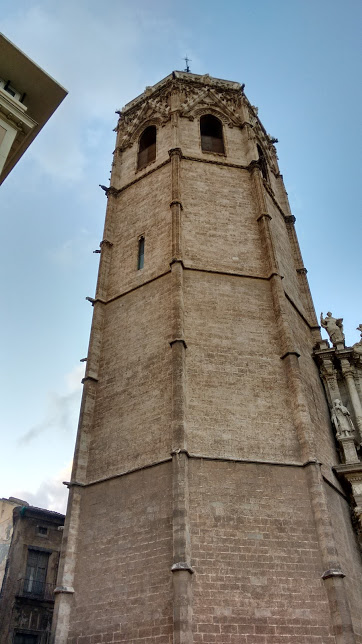
and you are rewarded with some of the best views of the city, in every direction.
Historic properties are common throughout Valencia. The Palace of the Generalitat Valenciana is the headquarters of the Valencian government, and is located directly next to the Cathedral, housed in a building that dates from 1421.
It is just 5 minutes walk away from the incredibly decadent Museum of Ceramics and Arts, which dates from 1740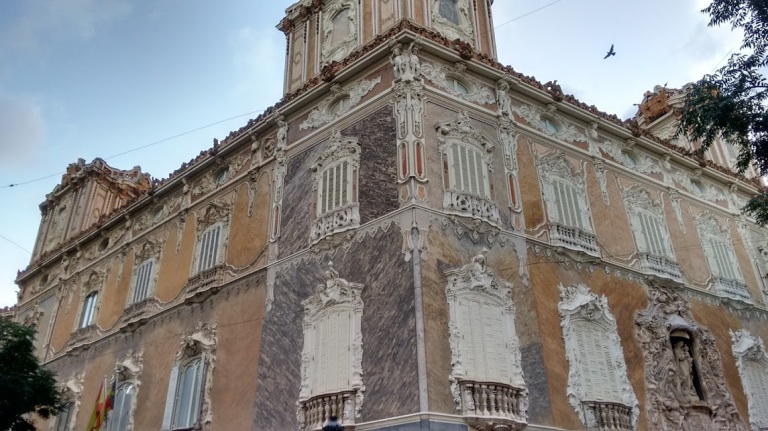
with an entrance that befits a palace built to showcase the finest art.
These buildings are not set back from the community but are well integrated within it with the Valencian council managing to build the city around them, as can be seen by The Convent of Santa Clara, which is well over 100 years old, being located right next to modern social housing. Whilst the city is proud of it’s heritage and history, it never allows it to be an obstacle that prevents it’s population from growing and living comfortably.
These buildings are not only good photo-fodder, they also tell the history of the city itself. 1,000 years ago Valencia was encased by a huge wall built to deter invaders. These walls have long since been dismantled, but two of the gates that allowed people to leave and enter the city remain to this day. The Torres de Serranos in the north of the city was built between 1392 and 1398, yet it’s in amazing condition due to a restoration job that was completed between 1893 and 1914. In the Spanish civil war of 1936-1939 this building was used to protect important pieces of art from destruction.
The Quart Tower in the west of the city, dating from the same period, still has the battle scars from the bombardments it suffered during France’s siege of the city in 1808. Since then, this tower has been used as both a womans prison and a military prison.
Valencia was one of the last cities to fall to Franco’s fascist dictatorship in the civil war of 1936-1939, with many bombs sites in the centre of the city still remaining. Large amounts of buildings were damaged and not repaired for many years, with many being pulled down in recent years to prevent collapse. Each one acts as a broken tooth in Valencia’s smile, yet they give an honest account into a nation that is only 40 years into democratic rule. The upside to this is that in contrast to many European cities Valencia’s city centre has ample room to grow, and won’t have to suffer the same fate as many other cities of having much loved buildings demolished and communities ripped apart to make way for new housing in the future. (London, I’m looking at you here……) Some estimates say that despite there being only 1,500,000 people in Valencia, there is room enough that the city could house 2,400,000 people within the city limits by simply filling in the gaps that remain, repairing buildings currently unused and making better use of housing stock. Considering the overcrowding that many cities complain about, such an asset should not be underestimated.
Despite the abundance of historical gems the city is forward looking too, with it’s futuristic Science and Arts Park
which houses a world class Science museum, amongst many other buildings.
and also includes Europe’s biggest Aquarium complex, with 45,000 animals across 500 species swimming in its 42 million litres of water, including sharks, penguins, dolphins, sea lions, walruses and beluga whales.
The city is full of both modern architecture
and remnants of simple homes scattered across the city.
Nowhere is this approach of mixing history and cutting edge design more obvious than in Valencia’s bridges, with Puente del Real, built between 1595 and 1598
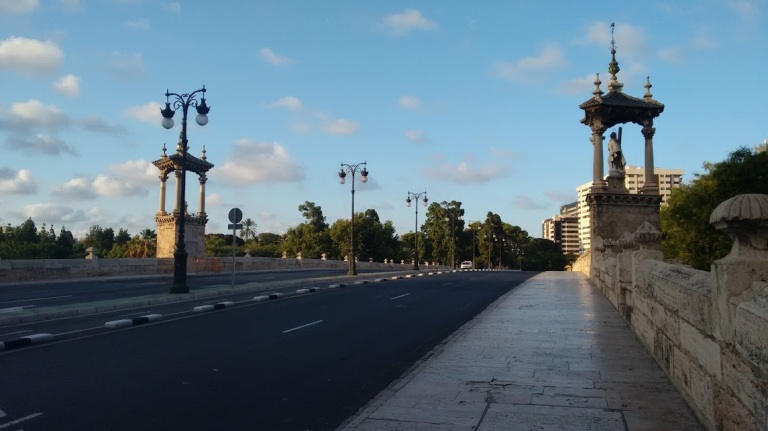
sitting alongside the cantilevered Assut de l’Or Bridge, inaugerated in 2008.
There is also a bridge called “Puente de las Flores”, which is literally “Bridge of Flowers.” It has at least 27,000 of them on there.
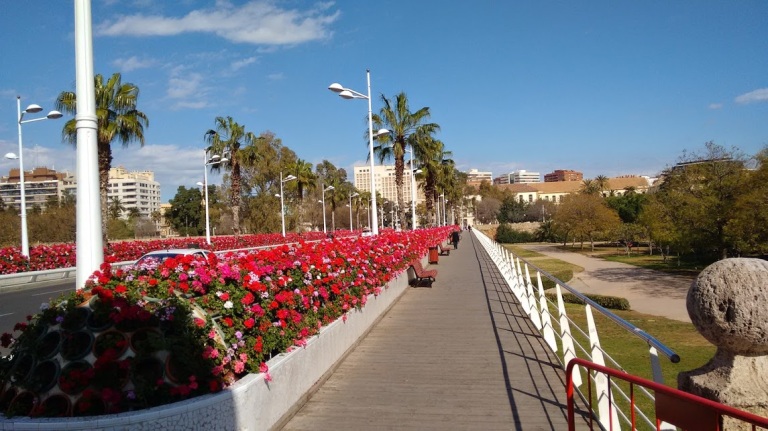
This all adds to the diversity of a city that has ramshackle shanty barrios such as Cabanyal
the traditional middle income area of Patraix
the centrally located La Xerea, which is within a few minutes walk of one of the premier shopping streets in the city, Carrer De Colon, which has a Los Angeles-esque Rodeo Drive feel about it,
Benimaclet, which was originally outside the city limits before being devoured by the growing metropolis
and the immigration melting pot of Plaza Espana,
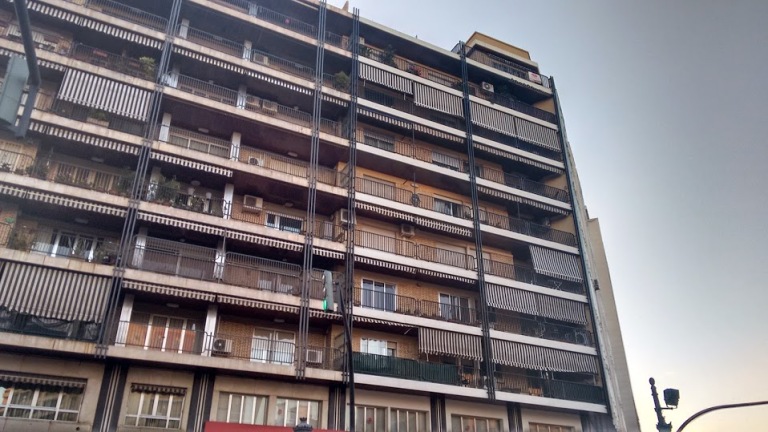
all of which are a short walk away from the city’s most exclusive area, L’Example. 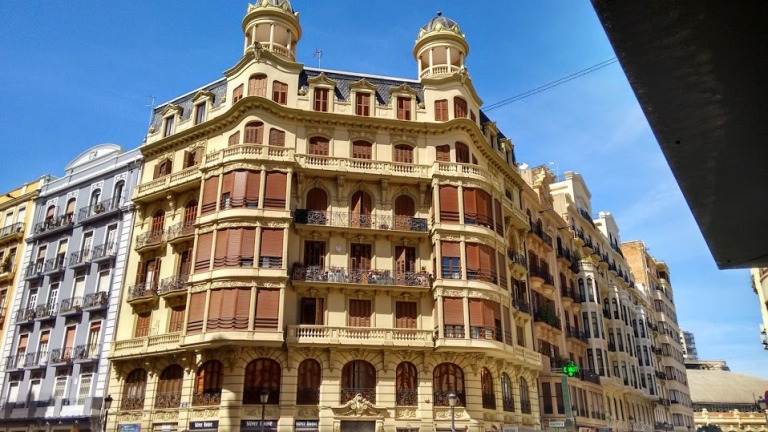
There was once a river, the Rio Turia, which ran through the city centre until 1957. During the summer there is little rainfall and the orange groves of the region would suck up much of what little water there was, whereas in the winter there was lots of rain and nothing to suck up the excess water. This meant that the river was usually either low or flooded, and there was an estimated 75 floods recorded in the previous 7 centuries up until the 1950’s. In October 1957 it bursts its banks again and flooded the whole city, with some parts being up to 5 metres under water. 5,800 homes were destroyed with at least 81 people losing their lives.
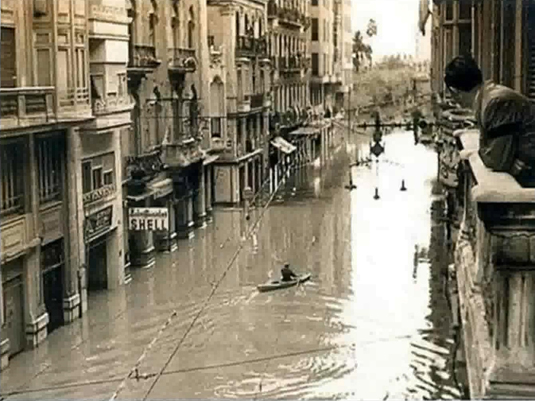
As a result, the decision was taken to divert the river to the south, leaving a huge gaping hole running through the middle of the city. There was a, frankly, bizarre plan to turn it into a motorway that was suggested in the 1950’s, with plans even being drawn up.
Thankfully these plans were rejected, and much of it today remains a dry river bed that act as the lungs of the city.
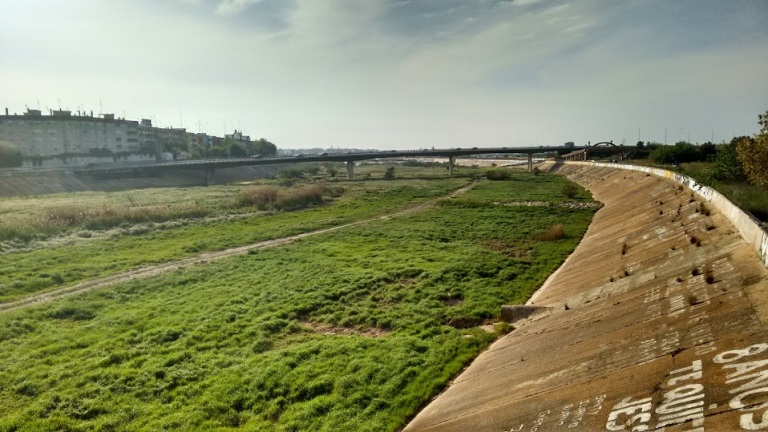
The city council has steadfastly resisted the temptation to sell the prime land off to property developers, instead investing heavily into converting much of it into a public garden that is the envy of any other city. With years of water flowing over it the soil was rich with nutrients, which made it easy to convert to lush gardens. If you’re going for jog in this city, this is the place to do it.
There were some parts of the Turia that were too large to convert, so they created a freshwater park for ducks, geese and, of course, people to enjoy. A large hill gives great views over both the water
and over the miniature odeon next to the water. In the summer, expect dance troops with battery powered stereos to perform routines for spare change on the stage at the bottom.
If the dried up Turia riverbed is too full, there are numerous boulevards to walk down
or you can rest in books shops that double as bars, such as UBIK in the Ruzafa area.
The transportation system is comprehensive, cheap and efficient. It’s modern and wide reaching, with much of it being built in the last 10 years. There are 137 stations on a network nearly 160 kms long. Up to 70 million journeys are made each year, with most of the central stations having 8 trains per hour.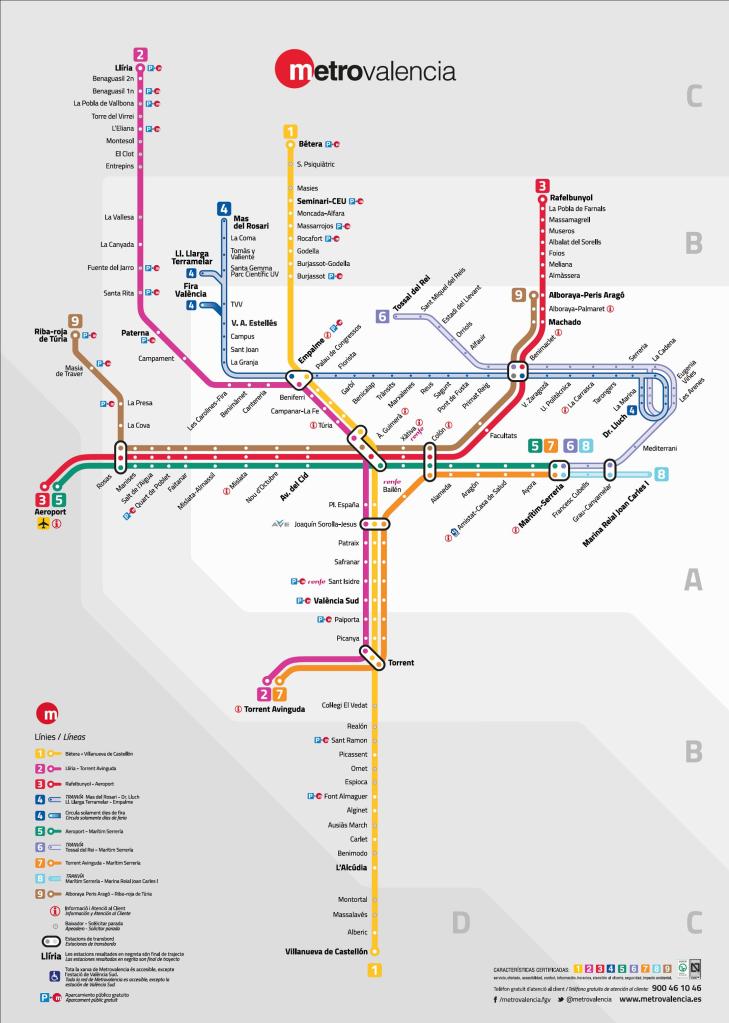
Prices are a fraction of what they are for public transport in the UK, starting at less than €1 day for a yearly travelcard that covers the whole city centre, or less than €1.25 a day for a travelcard that covers zones A&B, which will take you everywhere except the Airport and the towns based outside of the city limits of Valencia. Buy your tickets in packs of 10 and you get them half-price compared to buying them in singles, (people can share these 10 pack tickets as long as they travel together), and if you recharge your old ticket you will save even more. If you make a return journey 30 times in 2 months, the price of a journey drops to less than €0.70/ £0.50,

all on a system that is rarely overcrowded, and always has much needed air conditioning.
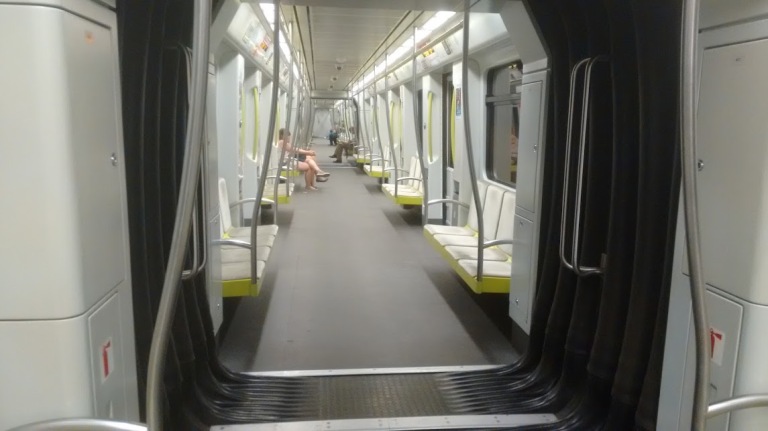
Most of the stations in the city centre are underground
but when you leave zones A & B to connect to the small villages that are outside Valencia, (some of which have up to 25,000 people and offer a great chance to experience small town Spain) you travel through plantations
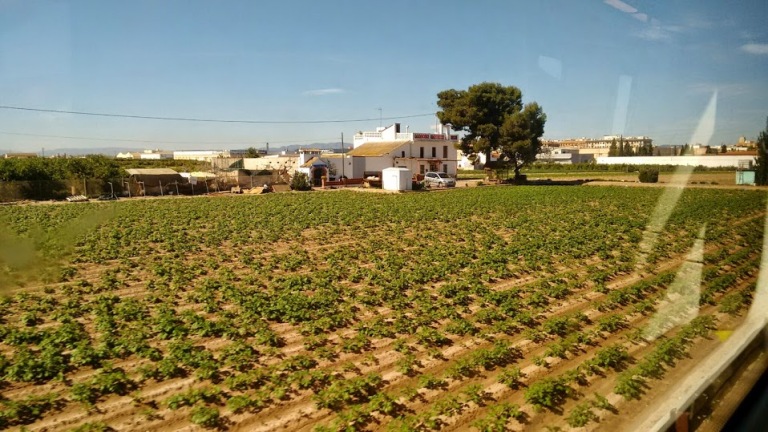 to reach stations that have the beauty of a rural train station, with a regular service to boot, such as El Clot Station on Line 2.
to reach stations that have the beauty of a rural train station, with a regular service to boot, such as El Clot Station on Line 2.
There are even Metro stops that drop you off in the middle of forests.
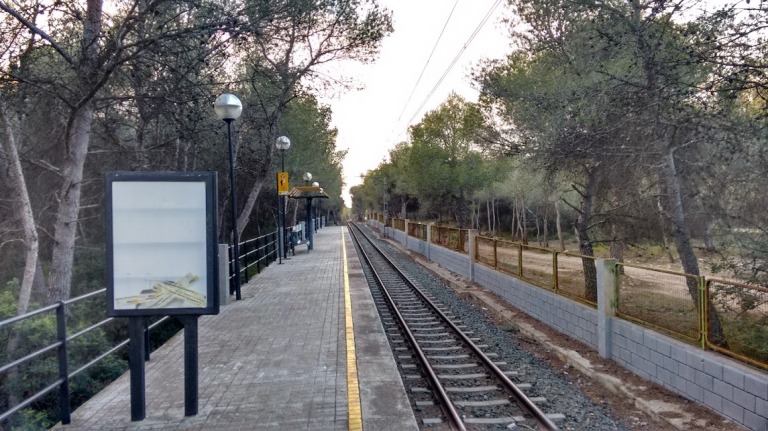
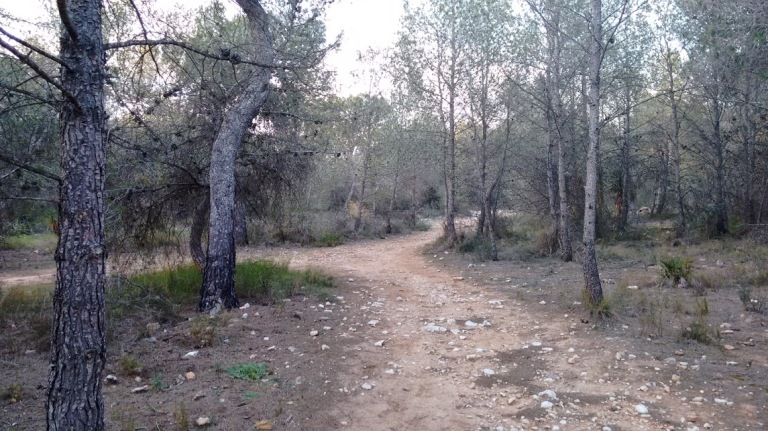
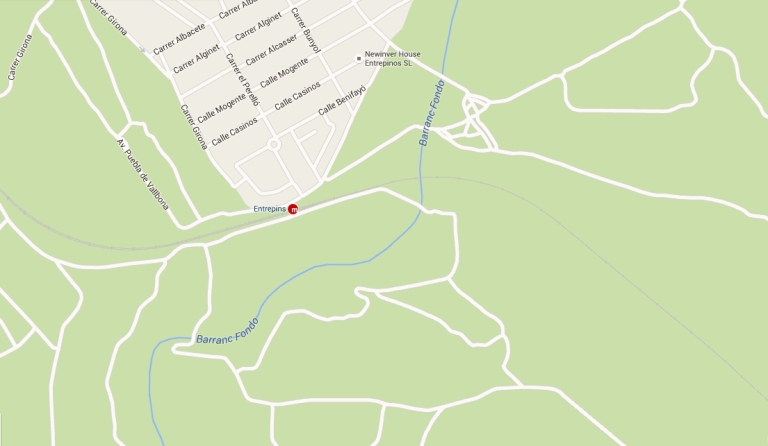
Plus, you get to travel through magnificent architectural gems in the centre of town, such as Alameda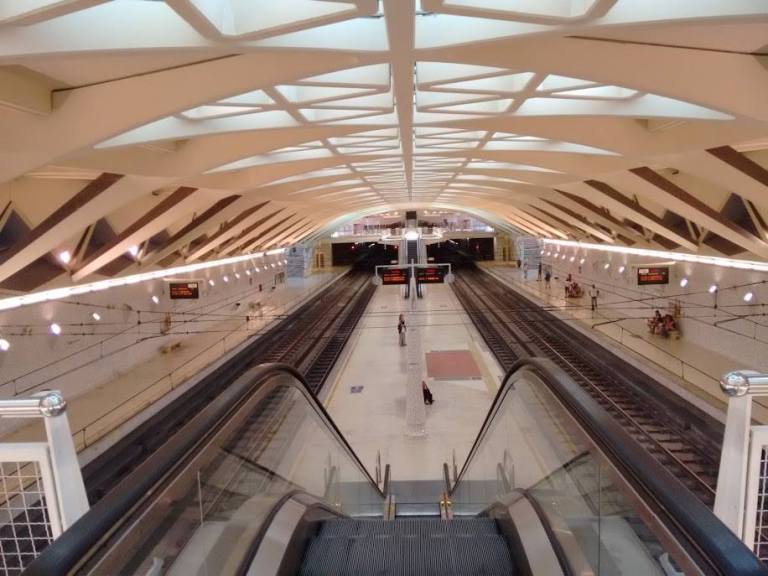 which allows natural light to flood through these fantastic sky lights
which allows natural light to flood through these fantastic sky lights
that people can walk over from above.
As the city is less than 6kms by 9kms it is easily manageable to travel by public bicycles, with extensive bicycle lanes There are over 2,750 bicycles available for hire in over 275 locations around the city, and an annual membership will cost just €29.21.

There is nowhere better in the city to get food than at Mercado Central. Construction started in 1914, with the market finally opening in 1928 as a means for people to shop out of the hot glare of the Valencian sun. It has over 400 stalls that provide over 1,500 people with employment selling meat, fish, fruit and vegetables, spices, herbs, cooked food, alcohol and much more from all around the world, 6 days a week, being regularly used by tourists and locals alike. If you cannot buy it here, it’s not worth buying.
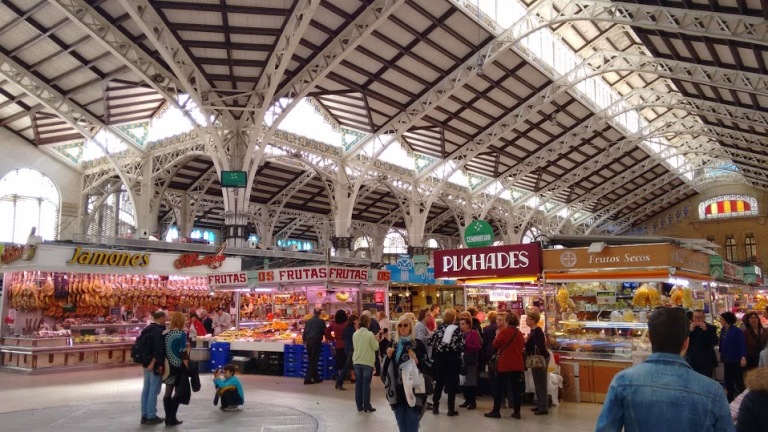
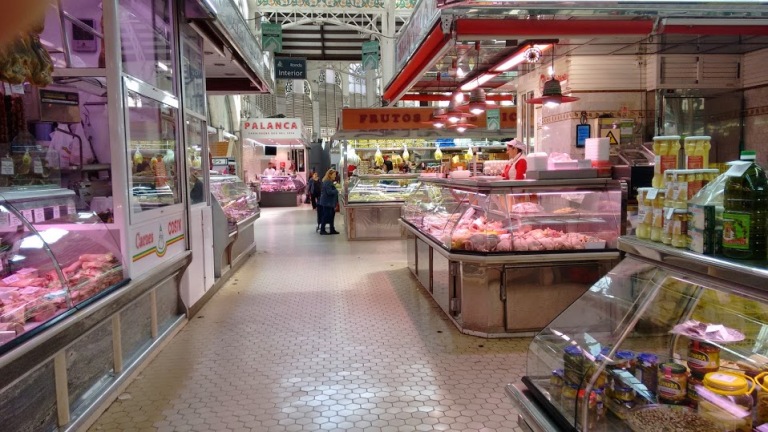
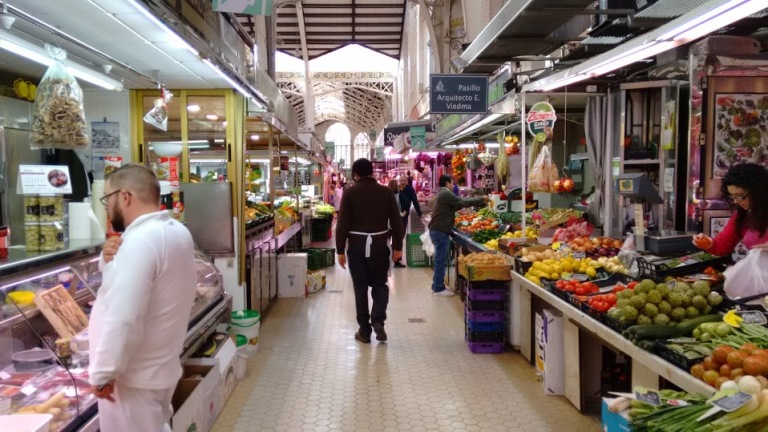
There are many other markets too, such as Colon Market, loved by the locals for it’s food halls:
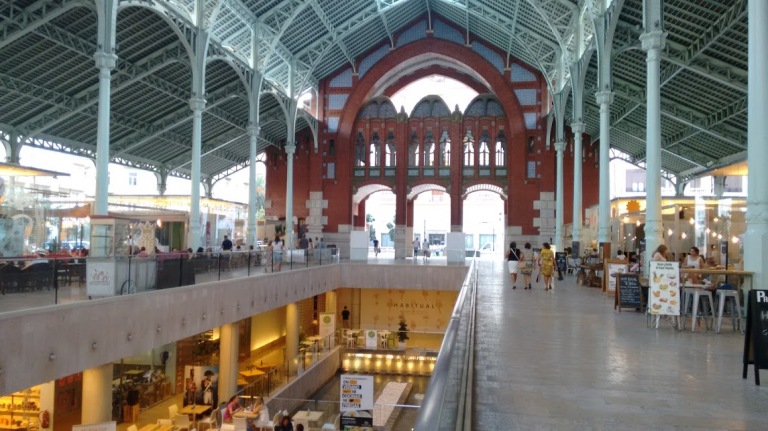
and Ruzafa Market, which is the less touristic counterpart to Mercado Central, selling the exact same produce that is about 20% cheaper in simpler surroundings. 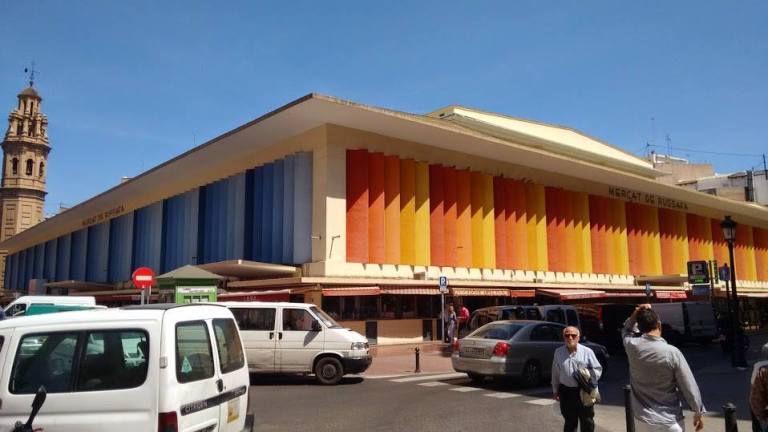
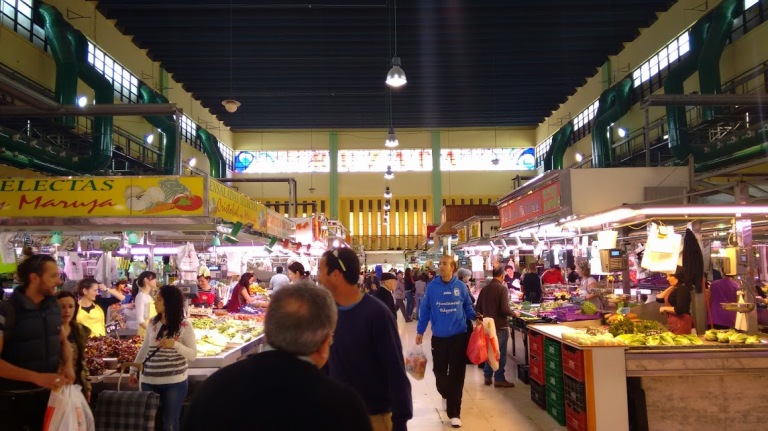
Ruzafa Market can also be spelt Russafa de Mercat, as it is spelt on the outside of the building. This is because Valencia has two official languages: Castilian Spanish and Valencian. All of the main street signs, airport signs, hospital and council notices are shown in both languages, while some markets will go under a Valencian name on the building, but be listed with a Spanish name on national maps. Valencian is taught in schools, and is similar to Catalan. In a recent study, nearly 50% of Valencians said that they could speak Valencian “perfectly” or “quite well.” Due to Valencia also being heavily dependent on tourism, the majority of people that tourists will encounter will also be easily able to converse in English too.
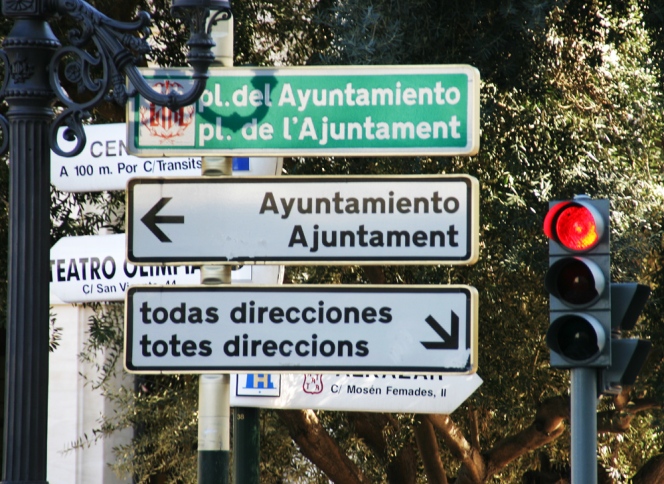
If you wanted to explore the rest of Spain, the train station is served by both short-mid distance RENFE and long distance-national AVE trains in this fantastic station, built in 1917.
which surely has one of the best waiting rooms in Europe.
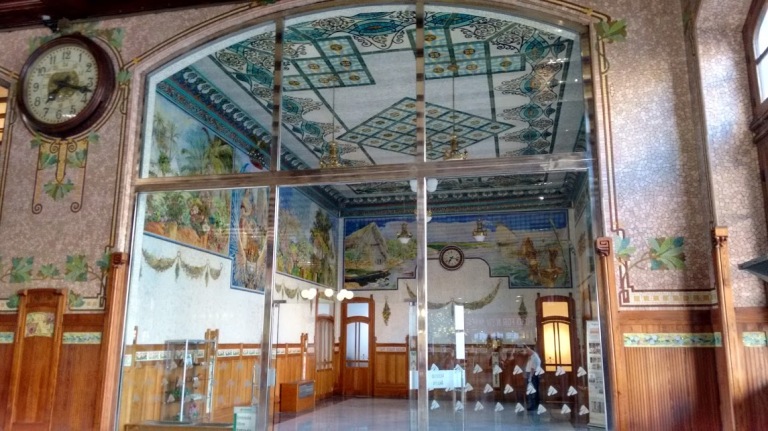
Check out that ceiling detail!

Mediterranean cruise ships also dock in the city, allowing cruise ship passengers to add another city to their trip whilst providing the city with much needed tourism revenue.
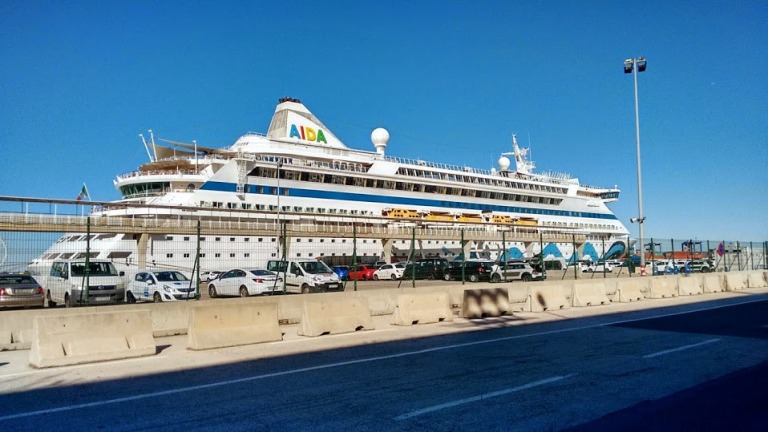
The city also has it’s own airport that is just 20 minutes from the very city centre by Metro, with 8 trains per hour and fares costing between €4.95 and €1.90, depending on whether you buy 1 or 10 tickets, which means you never need to get a train or a cab that costs the same as your flight. The Airport has regular flights to the UK that start from only €25/£18.50 each way, and the metro station is within the airport. With the airport being small with only 14 gates and with free wifi, along with it’s short journey times it makes travelling as stress free as possible
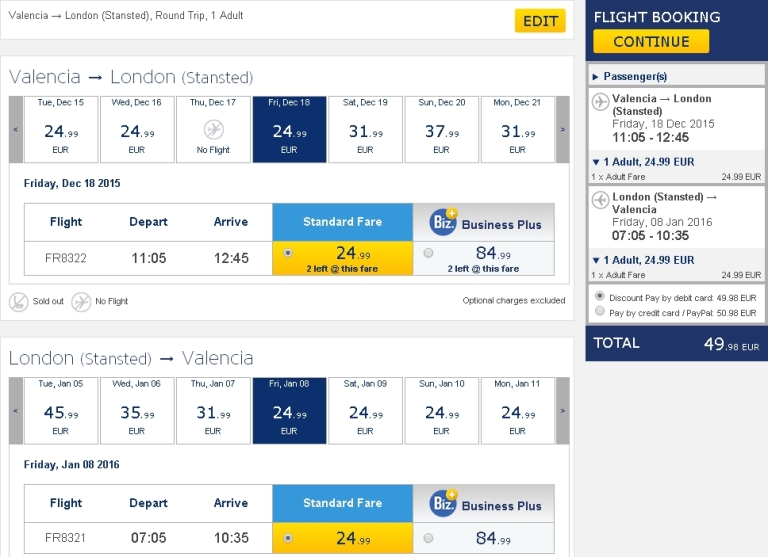 making Valencia one of the best connected cities in Spain.
making Valencia one of the best connected cities in Spain.
The city is a haven for sports lovers too. Valencia is home to two La Liga top division teams, with them playing their home games on alternative weeks, making it easy to catch a top flight game most weeks. The main team is Valencia FC, who have won the Spanish La Liga 6 times, Spain’s premier knock-out competition the Copa Del Rey 7 times, and have reached the final of the Champions League twice, in 2000 and 2001, playing their home games in the Mestalla
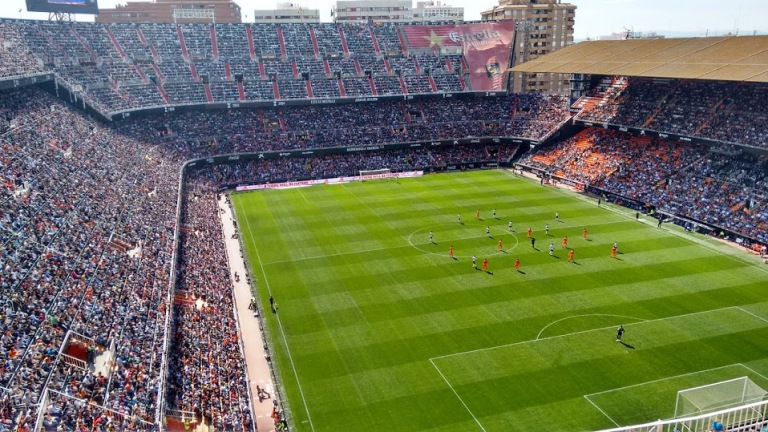
with their stadium located right in heart of the city, right next to where it’s supporters live and not in some out-of-town complex.
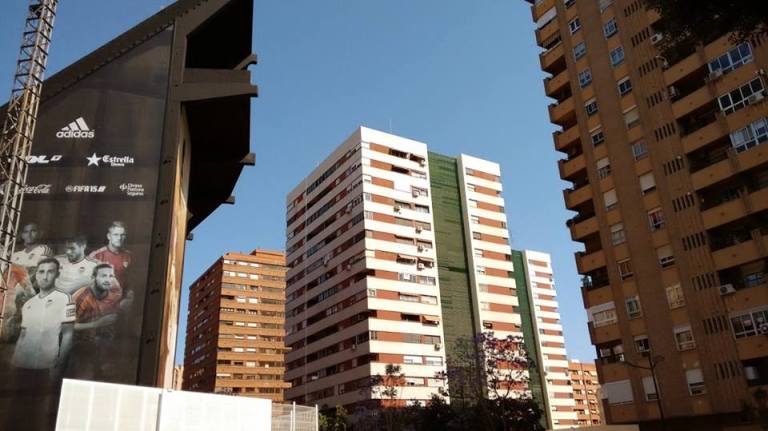
Their city rivals are perennial underdogs Levante UD. Whilst “The Frogs” of Levante UD have never finished above their city rivals in their history, they have still finished a respectable 6th in La Liga the 2011-2012 season, with former players including 3 times Ballon d’Or winner for European Player of the Year Johan Cruyff, who played for them in 1981. A season ticket for Levante will set you back from €170 a year for non-members, and €120 a year for life members, with life membership costing a one-off €100. One season ticket also allows you to take 2 children under the age of 14 in for free, so if you bite the bullet and become a member, you could be paying less than €7/£5 per game for three people to see teams that have reached European Finals in the last two years, such as Barcelona, Real Madrid, Athletico Madrid and Sevilla, along with their city neighbours, all in this adorable stadium.
 Vilarreal CF, current members of La Liga and runners up in the 2007-2008 season are within an hour and €8 train journey away, for a return ticket. There are also 14 other teams within the city that play in Group 2 of the Spanish 5th Division, with well over 30 additional semi-professional football teams within an hour of public transport away.
Vilarreal CF, current members of La Liga and runners up in the 2007-2008 season are within an hour and €8 train journey away, for a return ticket. There are also 14 other teams within the city that play in Group 2 of the Spanish 5th Division, with well over 30 additional semi-professional football teams within an hour of public transport away.
For amateur footballers there are great facilities available for free, with football pitches right in the city centre, whether the game is played on grass/astroturf
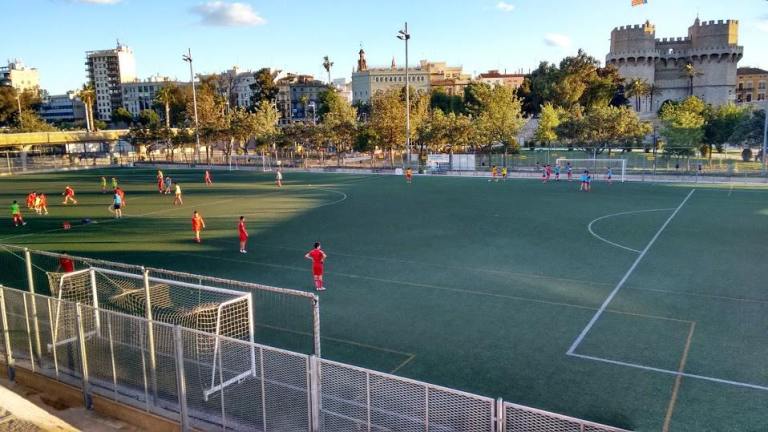
or sand
If you are keen on other sports, the city provides for lovers of Rugby
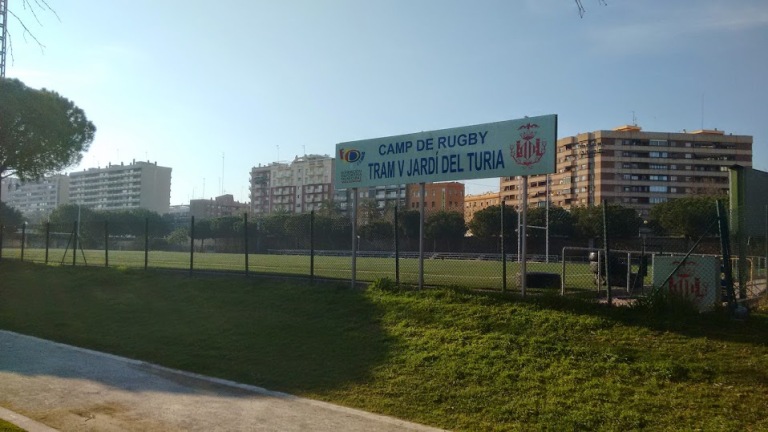
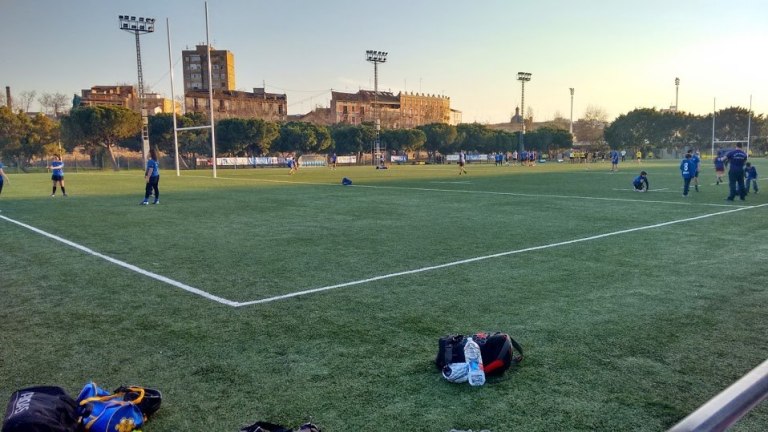
and Athletics.
There’s a Baseball ground which is shared by the Valencia Astros
and Levante Cricket Club, who you can also find on their Facebook page.
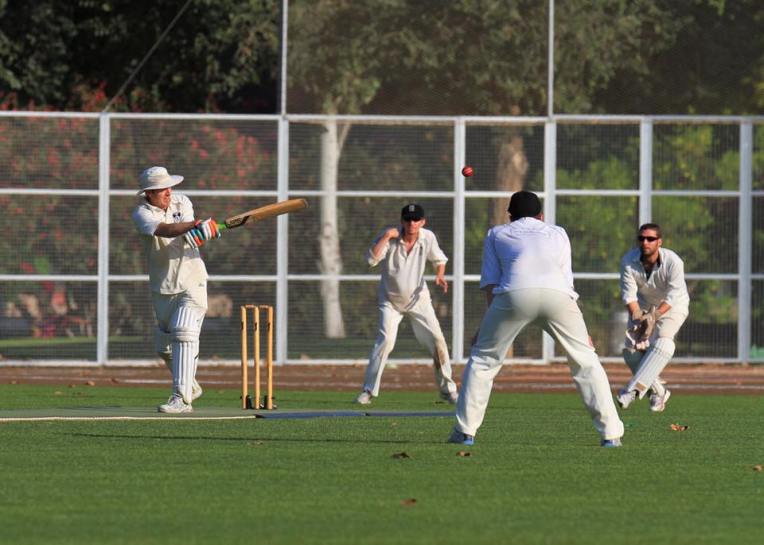
Naturally for a coastal city there is Beach Volleyball

Table tennis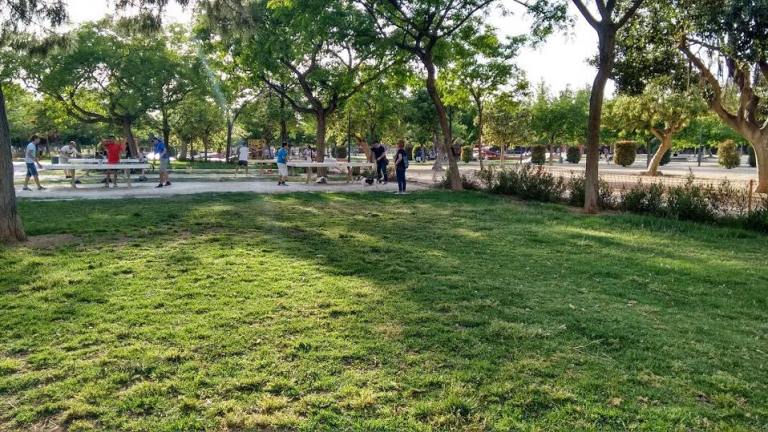
and Basketball amongst many other sports, with Valencia BC holding the record of most Eurocup titles with 3 wins, in 2002/2003, 2009/2010 and 2013/2014. They regularly entertain up to 9,000 fans.

There are free basketball courts available

and not one but two American Football teams who play in the national league, The Valencia Firebats and The Valencia Giants. If you prefer your sport with wheels on, Valencia has that covered too: literally. In 1911, 6 warehouses were built next to the docks so that fresh food and the local fish that had been caught minutes earlier could be displayed out of the hot sun. 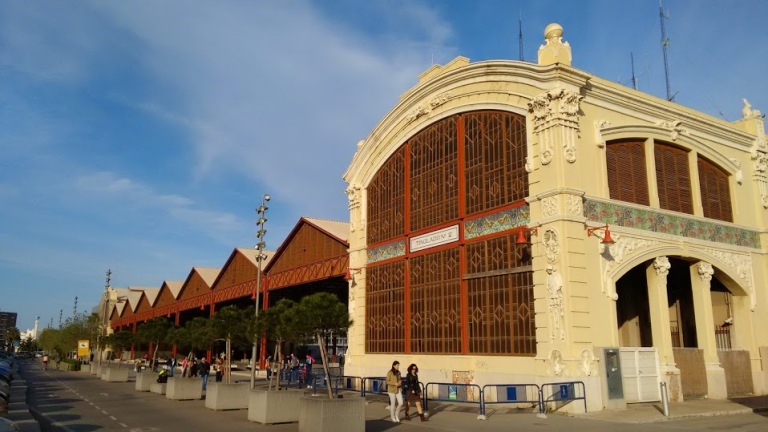 In the meantime, modern refrigeration has surpassed the need for these warehouses, with 3 of them being subsequently demolished. Warehouse 2 survived and has been taken over by rollerskaters and skateboarders, giving them a shady and dry place to practice during the hot summer.
In the meantime, modern refrigeration has surpassed the need for these warehouses, with 3 of them being subsequently demolished. Warehouse 2 survived and has been taken over by rollerskaters and skateboarders, giving them a shady and dry place to practice during the hot summer.
There is a choice between different skateboard parks
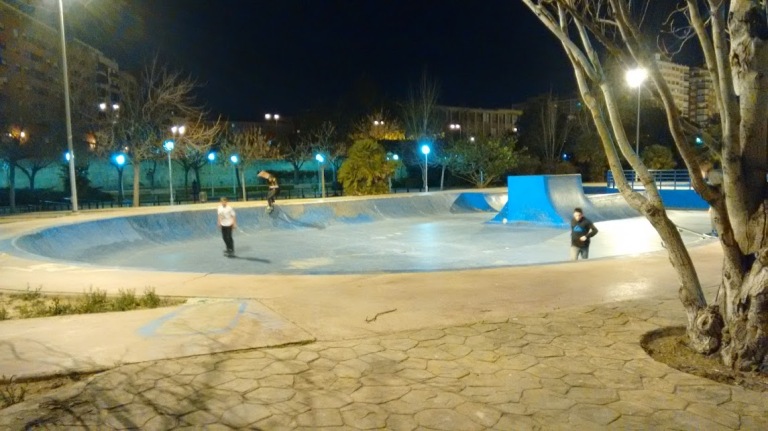
and from 2008-2012, Valencia even hosted Formula One races every year on it’s street circuit.
![By Alan (originally posted to Flickr as P1130753) [CC BY 2.0 (http://creativecommons.org/licenses/by/2.0)], via Wikimedia Commons](https://inspectionandprogress.wordpress.com/wp-content/uploads/2015/08/fisichella_valencia_2008.jpg?w=768&h=576)
And the sport is not just for people, there is also a little “dog-gym”, in the centre of town. No, seriously.
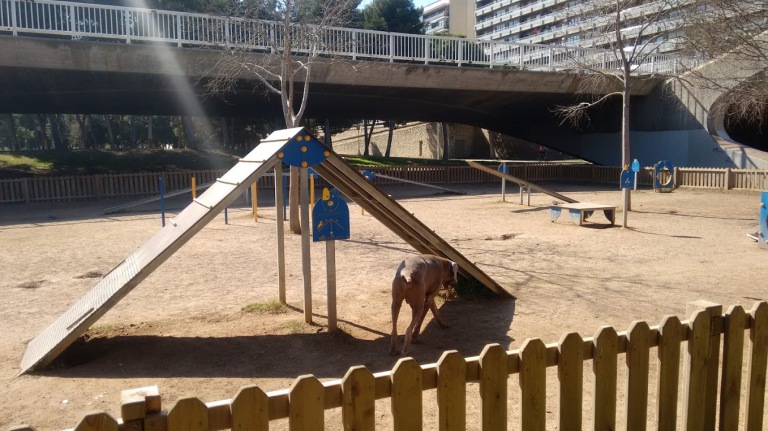
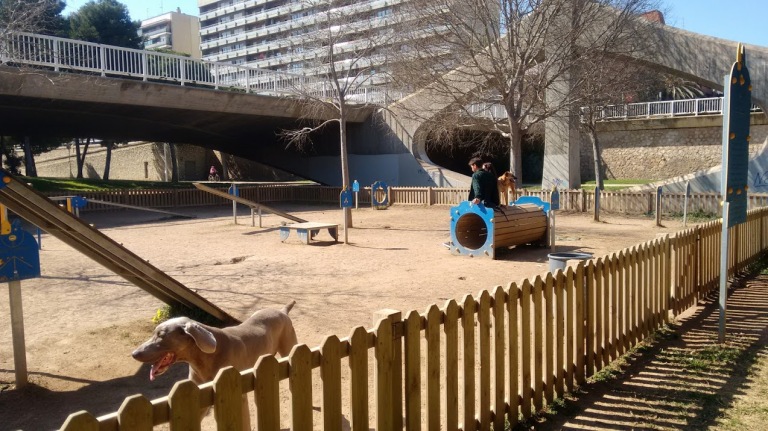
If you wanted a more sedate way to pass the time, why not play some chess at the public tables?
Passionate live music lovers are catered to also. There are venues throughout the city, whether they be large rock venues
intimate jazz venues
mainstream pop and dance clubs

and every July the Benacassim Festival takes place which can be reached in under 1 hour 10 minutes by express train, featuring some of the best bands in the world, all for a wallet-friendly €45 a day or less.
Valencia is the home to some of the most traditional Spanish dishes such as Paella, a rice based dish, with Valencian Paela containing both rabbit and chicken. There are also vegetarian and seafood options available.
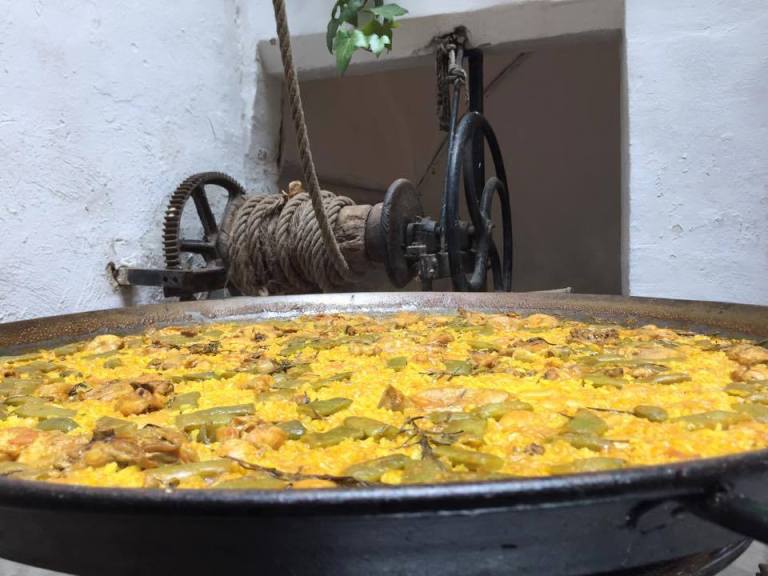
Despite being native to the Basque region of the north of Spain, Pinchos is also very popular in Valencia. In many places their price is consistent, with these servings all being €1.50 each
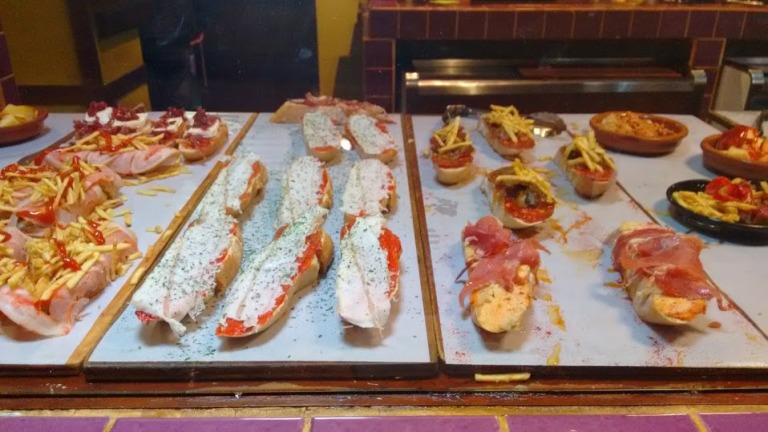
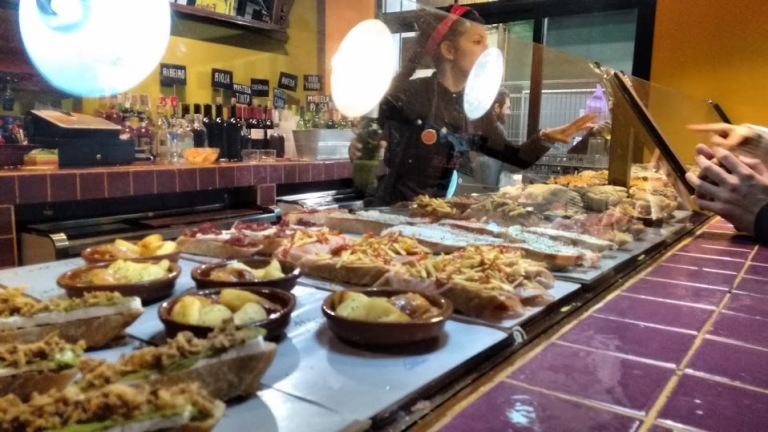
with other restaurants having a system where different dishes have different prices depending on their size and ingredients, usually costing between €1.25 and €2.50. They will each have different coloured/shaped cocktail sticks stuck into them to identify their price. You grab what you want from the counter (or ask the server, depending on the restaurant), with most people grabbing 2-4 dishes, and you keep hold of the cocktail sticks to show the cashier what you chose and then pay for it all at the end. It is a popular way to eat, especially at lunch time when the self-service and ready-made approach helps people who have a limited time to eat in.
In July, the streets are awash with Oranges and Lemons that have just dropped off of the trees.
On the theme of fruit filling the street, the last Wednesday of every August sees the Tomatina festival in nearby Buñol, a short 45 minute train ride away where 145,000kgs of tomatoes are dumped in the street and for one hour organised chaos ensues, with 22,000 people throwing them at least other. (In previous years up top 50,000 people attended, but recently this number has been reduced over safety fears.) If you can’t imagine what the streets look like afterwards….
The only main rule is that you must squash the tomatoes slightly first before throwing them to soften them up, but apart from that anything goes (within basic common sense). Technically the festival does not begin until someone has climbed to the top of a two-story high, greased-up wooden pole and reached the “coveted ham” at the top, but in practice this process takes such a long time that the festival starts before anyone reaching the meaty prize.
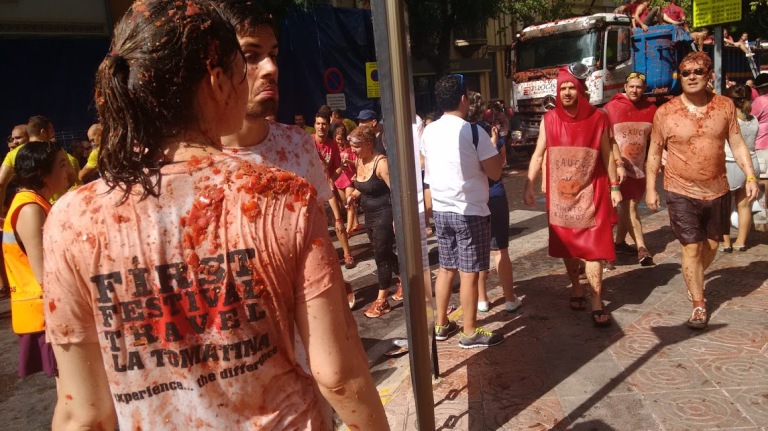
La Tomatina started on the last Wednesday of August in 1945 when some young people went to the town square to attend the Giants and Big-Heads figures parade. When one person fell off the float he flew into a fit of rage and started to hit everything and everyone in his path, and there was a market stall of vegetables that fell victim to a furious crowd who retaliated. People started to pelt each other with tomatoes until the local law enforcement ended the food fight.
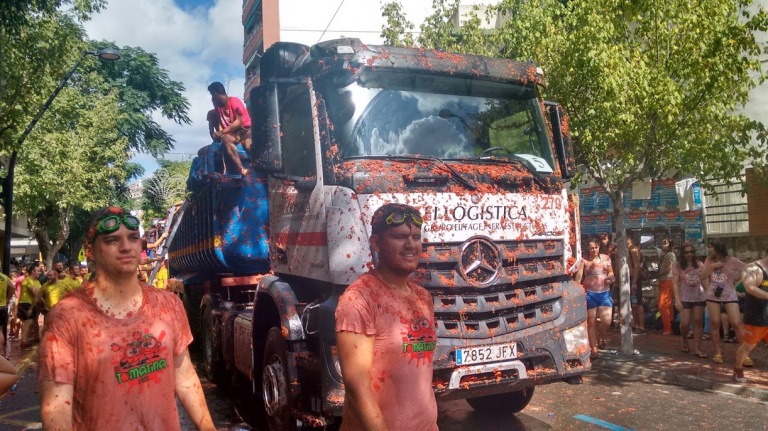
Having enjoyed the experience, the next year the young people of the town brought tomatoes from home for a rematch. Although the police broke up the early food fights in the following years, at this point the young boys had unknowingly started a tradition. La Tomatina was banned in the early 50s, yet it still persevered as locals were willing to be arrested to continue the now infamous annual event. Over time the festivity was again allowed, with it’s scale increasing year by year. The holiday was banned at times during the Spanish dictatorship under Francisco Franco of 1939 – 1975 for having no religious significance, but returned in the 1970s after his death, and is now a great source of tourism for the city.
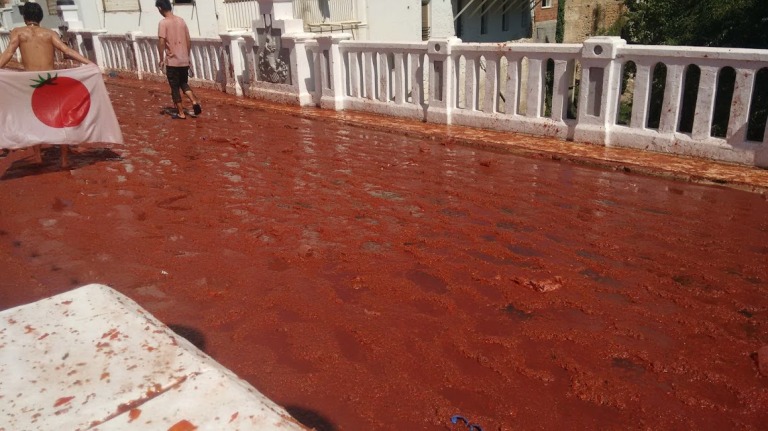
Valencia is also the home of Horchata, a drink which is made with water, sugar and Tigernuts, with many cafes like this one having served the drink daily for over 200 years.
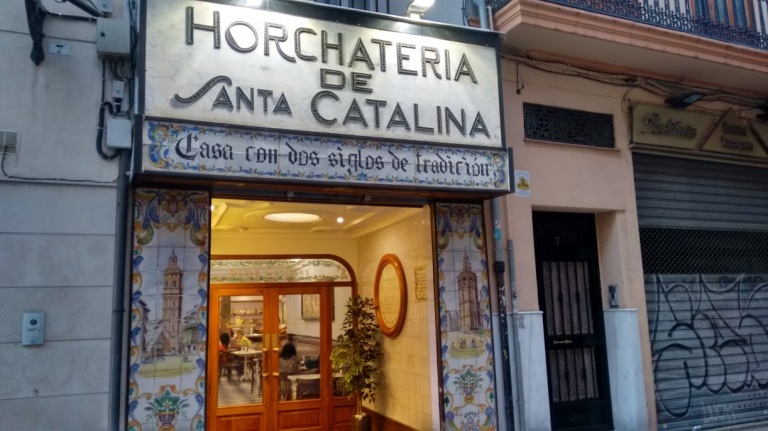
If you prefer a stronger drink, the city lends it’s name to Aqua De Valencia, a cocktail made from a base of cava or champagne, orange juice, vodka and gin.
The city is also home to numerous micro-breweries, including Micro-Cervecería Tyris, based in the city centre, where a pint of craft ale will set you back €4/less than £3.
More information can be found here on why Valencia is one of the best cities in Spain for beer lovers.
Valencian streets have some of the best street art in Europe. You can’t walk to a bus stop or pop to the shop for milk without seeing some. Click here for more than 300 more examples of how Valencian artists make the city a better place to live.
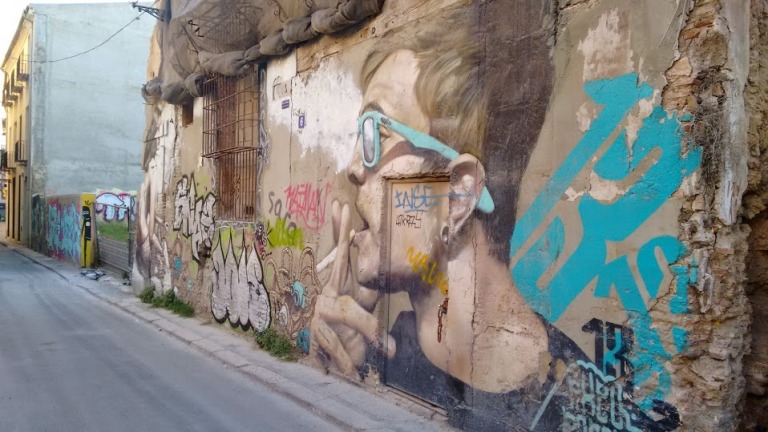
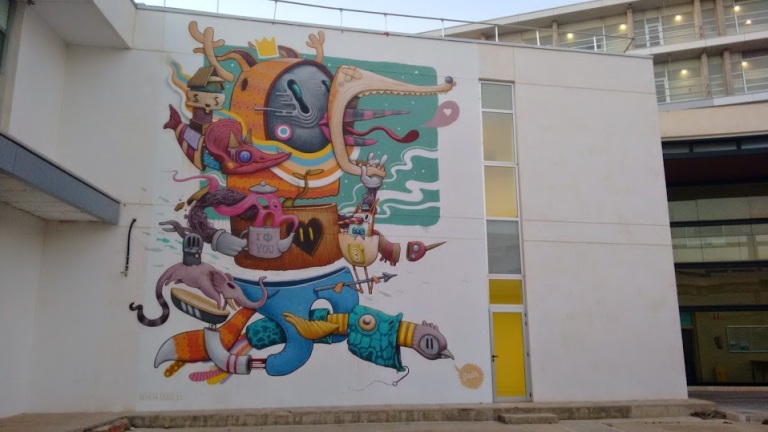
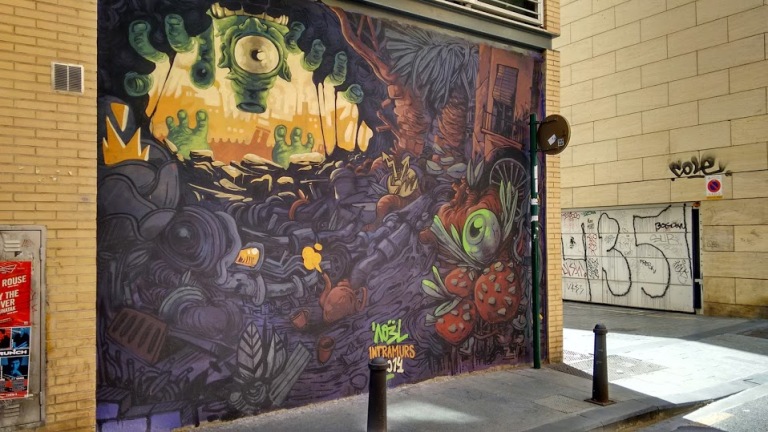
If you prefer sculptures, odd splashes of colour can be seen all over town
and Valencia’s nature is no less beautiful, with purple blossom trees blooming from June.
The city has beautifully manicured gardens to admire
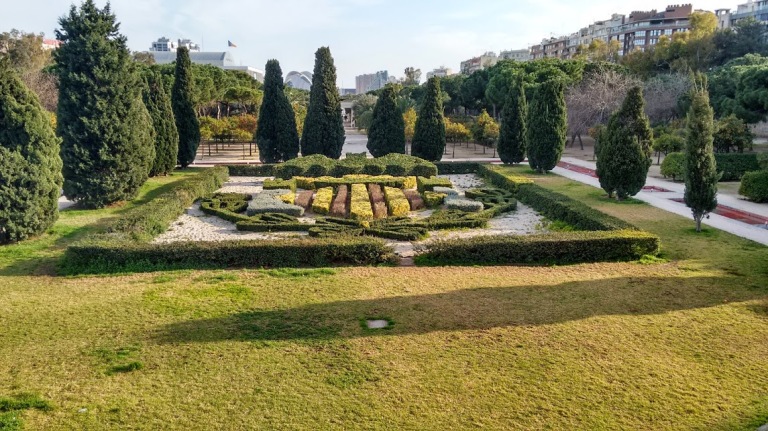
and if keeping fit is important to you, there are free gyms in public parks
and even at the beach.
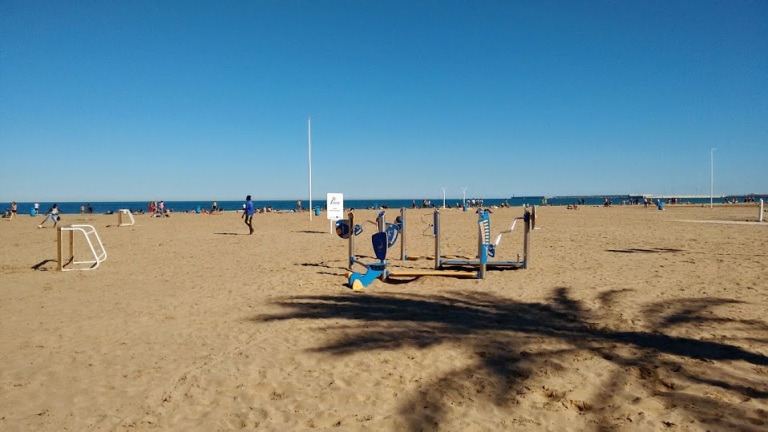 In March every year the Fallas (Spanish for Festival) is celebrated, which both celebrates Spanish tradition
In March every year the Fallas (Spanish for Festival) is celebrated, which both celebrates Spanish tradition
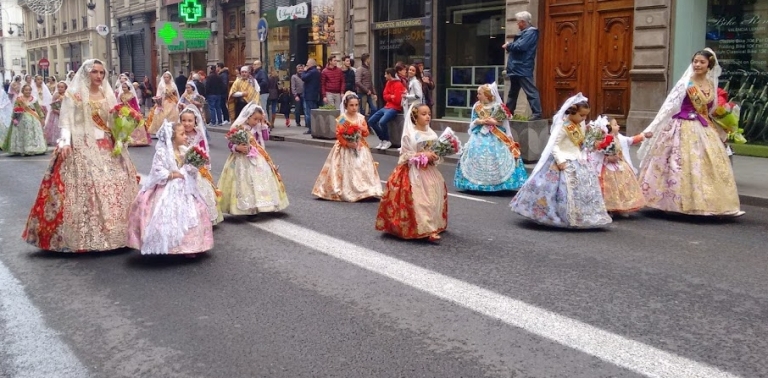 and also has futuristic japanese style sculptures that are up to 20 metres tall
and also has futuristic japanese style sculptures that are up to 20 metres tall
People will spend months building them out of wood, papier mâché and cardboard, before eventually burning them all on the 19th March. The origins of the festival are not certain, but many say it came about from the middle ages where artisans would dispose of the work that they had been unable to sell during the year by burning it during the cold season. The tradition was then escalated with the intervention of the catholic church who wanted the festival to coincide with the festival day of St Joseph, the patron saint of carpenters. Today the festival is a celebration of artistry, and an unnerving willingness to destroy art. ![By keith ellwood from Valencia Spain, Spain (La Crema, hosing down) [CC BY 2.0 (http://creativecommons.org/licenses/by/2.0)], via Wikimedia Commons](https://inspectionandprogress.wordpress.com/wp-content/uploads/2015/08/800px-la_crema_hosing_down_-_flickr_-_keith_ellwood.jpg?w=768&h=510)
For a more relaxed activity, the countryside is always on your doorstep. Rocafort station, on Line 1 of the Valencia Metro, is within 7 stops and a 15 minute train ride away from the city centre. Step off the train and you’re the countryside.
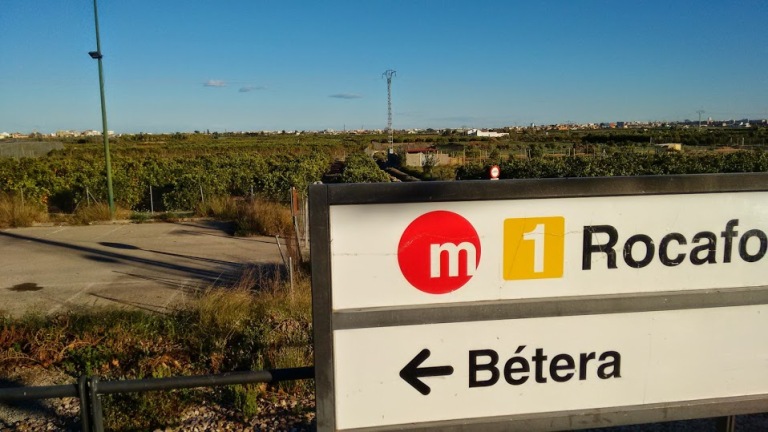
with this vista within 50 metres of the first road,
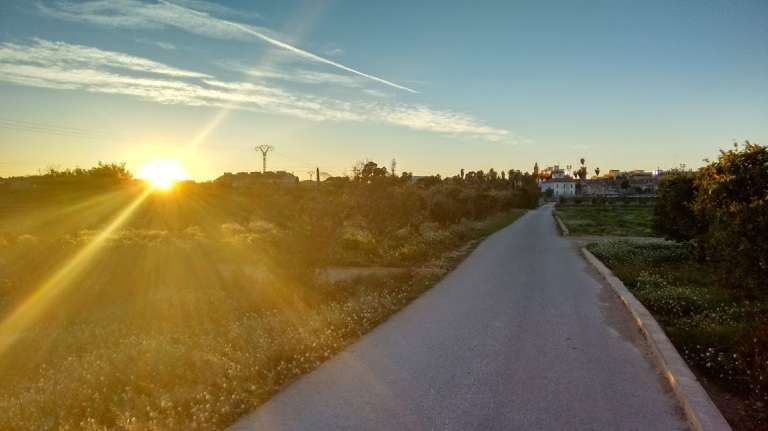
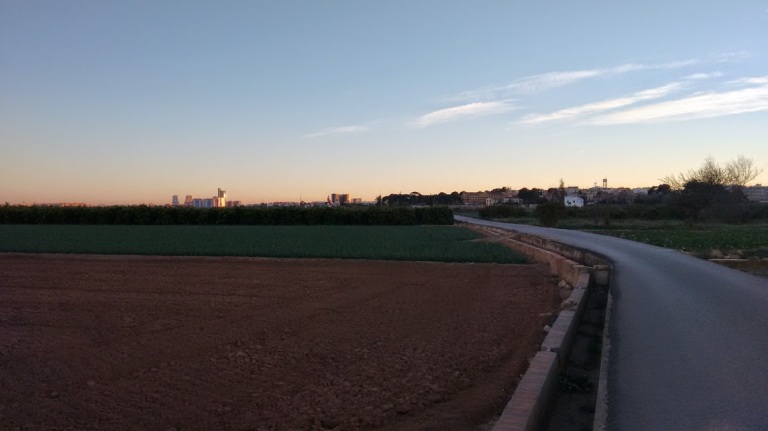
meaning you can be in the city centre, head to the countryside and have a blissful 20-30 minute walk in total silence surrounded by open fields, and be back in the city centre all within your lunch hour, which certainly beats checking Facebook while eating a Marks and Spencer ham roll.
If you fancy a longer walk, take a 40 minute metro journey to the recently connected village of Riba-Roja de Turia and it will take you to the start of a 24km walk into the city, which should take you 4-5 hours to walk. On average on Monday-Friday you will pass about 2 people per hour, with more cyclists using the route on the weekend. Either way, it is a fantastic way to see nature, with the reward of a city finish awaiting you.
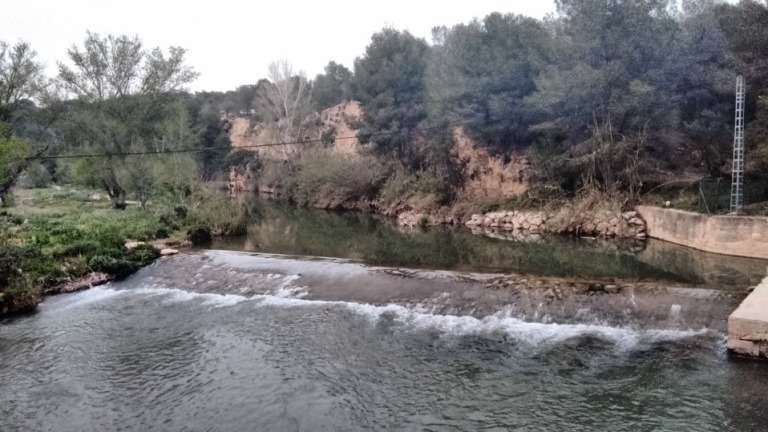
The city also has an abundance of public libraries, such as the Biblioteca Valenciana. Originally built over many years from 1546 as the Monastery of San Miguel of the Kings, this glorious example of Renaissance architecture was on the verge of being demolished before being presented it to the city council. In 1856 it was destined to be an asylum, but instead from 1859 to the mid 20th century it served as a jail. This was followed by a period of abandonment. Today, rehabilitated to it’s full magnificence, it has been converted into a library.
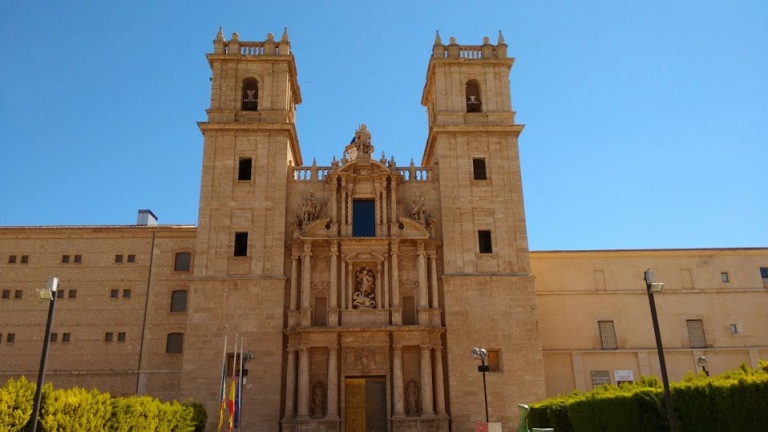
Take a 30 minute train journey north and you’ll reach Sagunto, with it’s roman amphitheatre dating back to 200BC. 8,000 of the 50,000 people that lived in Sagunto at the time would have been entertained here, and it has been recently restored, with some parts left untouched to show it’s original condition.

It is next door to the remains of an ancient castle, which dates back to 500 BC.
Both the castle and the amphitheater are free entry, and overlook Sagunto itself.
In contrast to many other European cities, Valencia has a plentiful and varied supply of cheap and public housing. If you conduct a search on property website Trovit, searching only for properties that are less than €500 a month, (£350 per month) you’ll get over 8,500 results. all for much less than the cost of a bedroom in London. They come in different styles

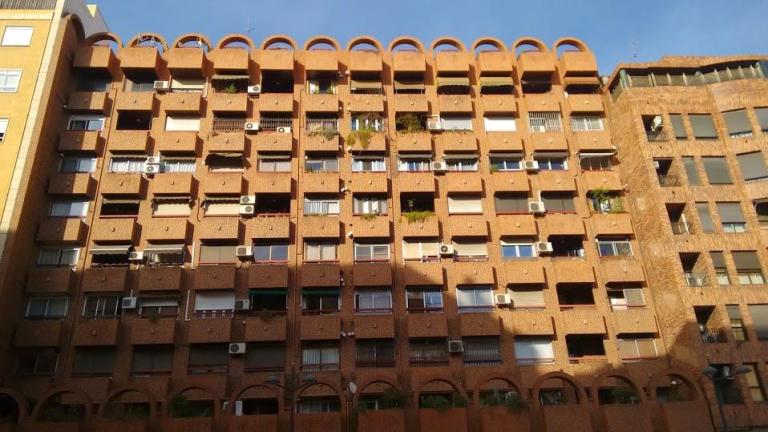
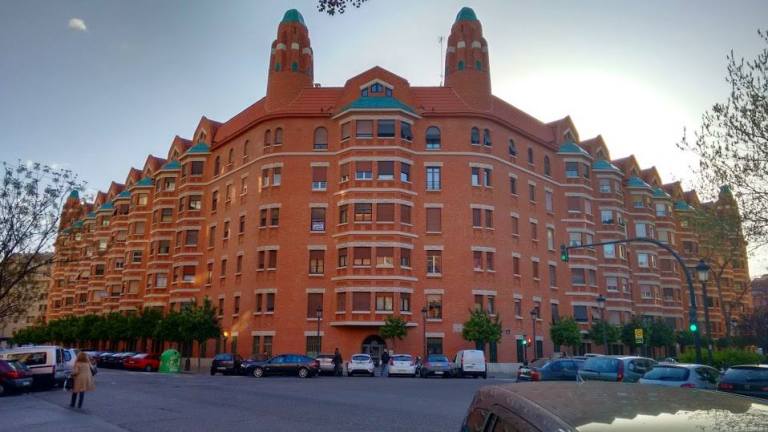
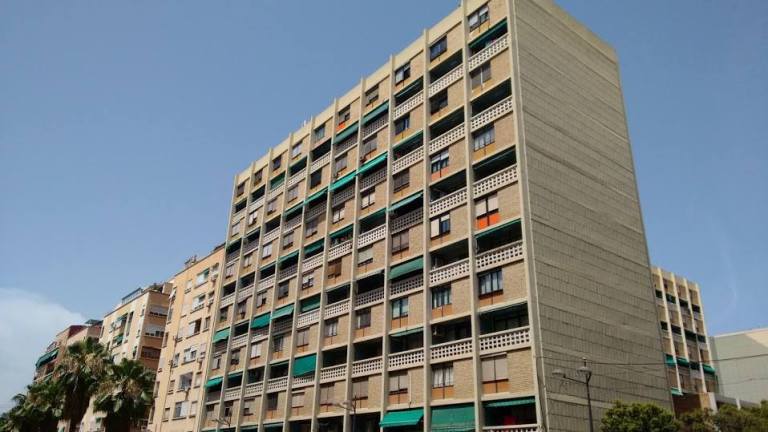
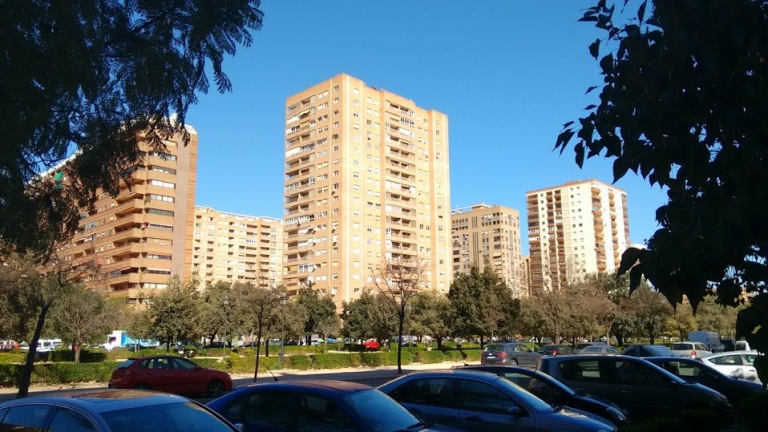
The shop windows of estate agents offer tempting opportunities.
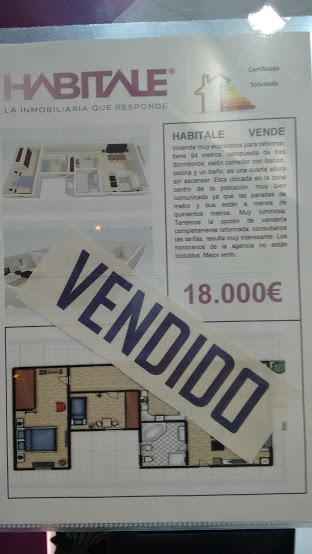
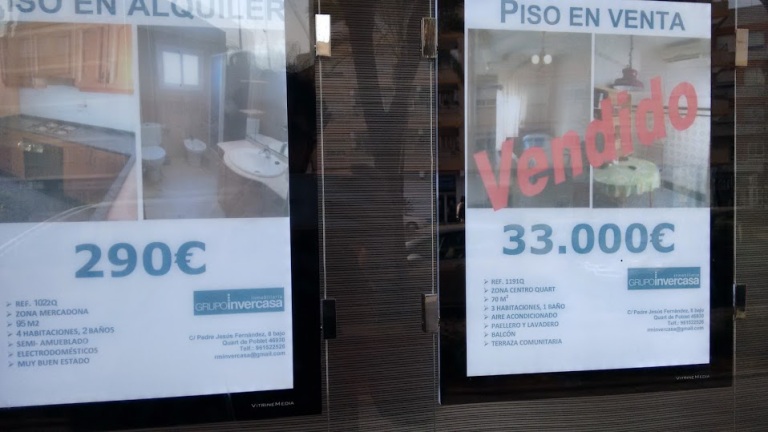
If you have more money to spend, the city offers the chance to splash the cash on extravagant luxuries, like somewhere to park your yacht
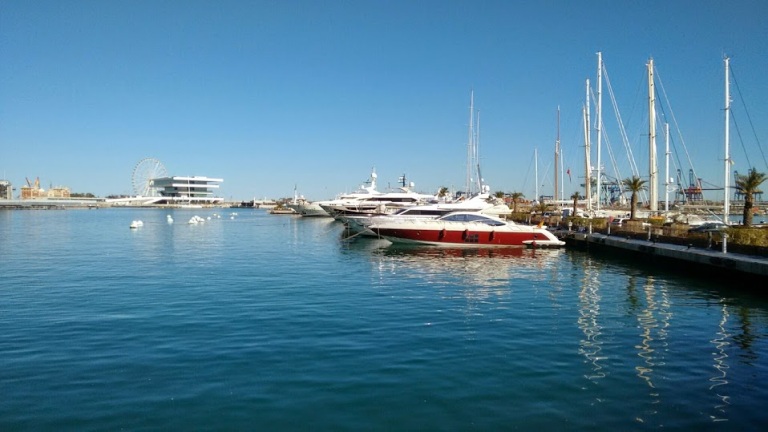
or spend your excess disposable income.
As you would expect from Spain, there are well over 50 main churches in the city alone,
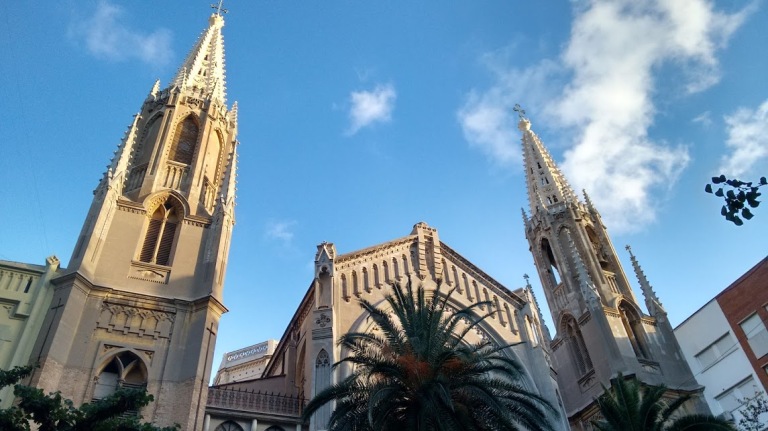
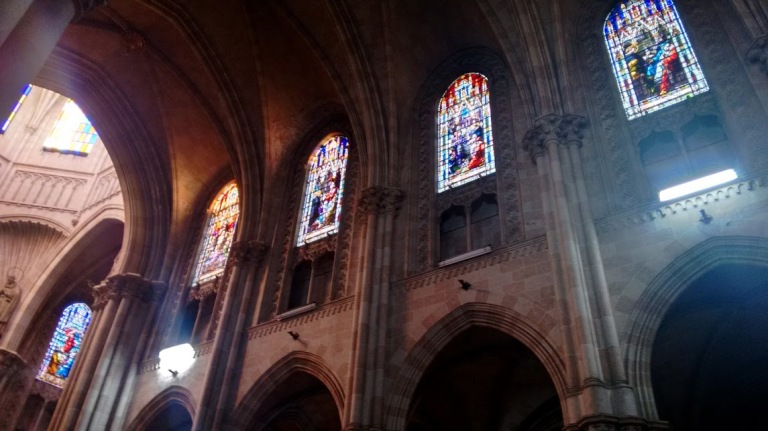
and churches on the outskirts of town that 95% of the locals don’t even know exist,
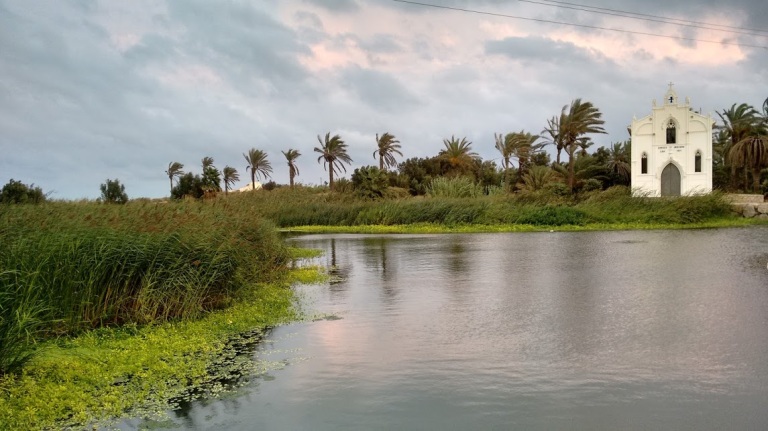
with fantastic synagogues such as this one, which was built in the 1930s, yet looks like the sort of home that Ringo would live in in Yellow Submarine.
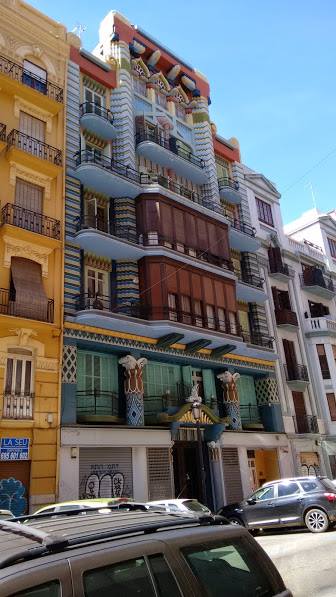
There is a strong Muslim community too,
and evidence of the working nature of the city docks in the streets.

The grafitti can get political
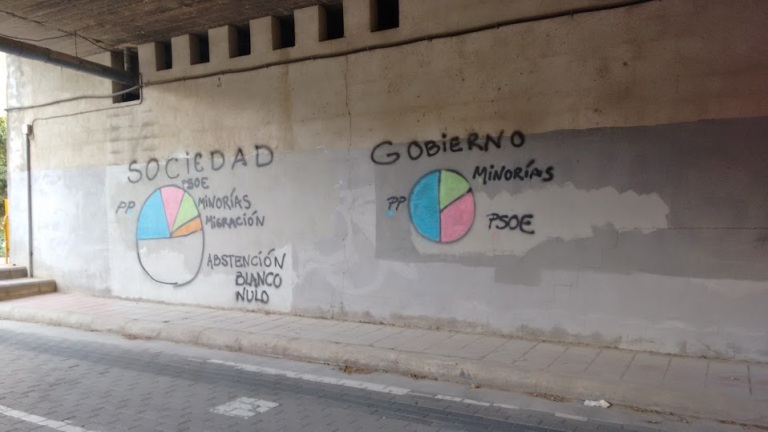
and the Police stations can look pretty great too.
If you yearn for a bit of culture, the cities micro-theatres host plays as short as 15 minutes that are performed to a maximum of 25 people.
The prices at nearby bars continues the tiny-theme, with drink prices that fit any budget.
To help cool you off in the summer, there are an abundance of water fountains in the city centre
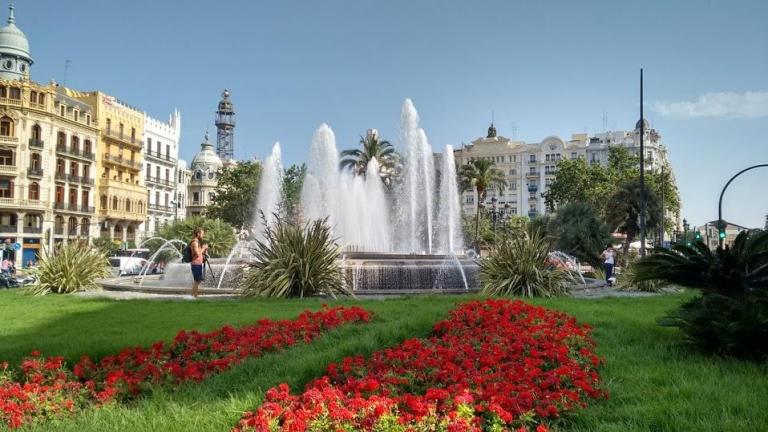
and not only in the best parts, even the poorest of areas have them.
Since when was a post office a tourist attraction? When it looked this awesome, that’s when!
There are free museums with examples of traditional Spanish carvings that are up to 600 years old and stand up to 5 metres tall.
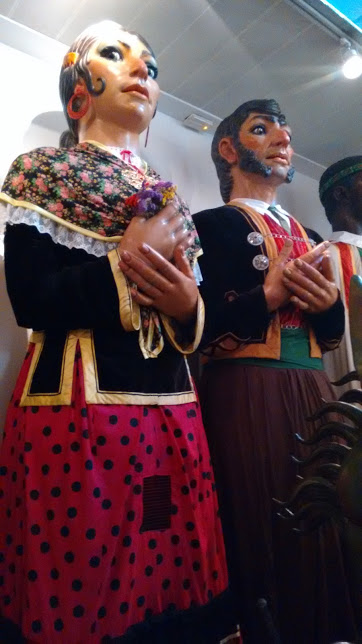
Port Saplaya, in the north of the city brings a touch of Venice to Valencia.
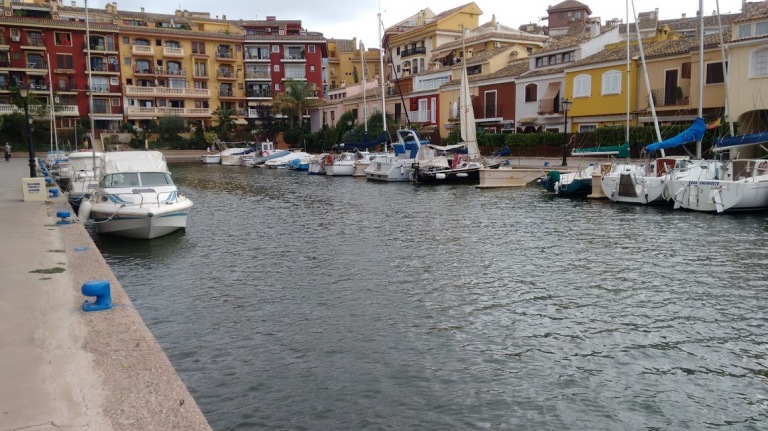
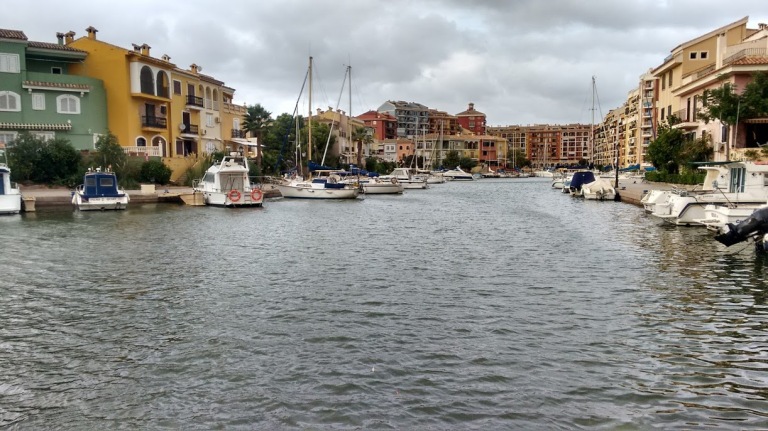
with tiny holiday huts nearby that have stood for over 70 years.
The Albufera national park, just to the south of the city has some of the finest freshwater lagoons in Europe, spread out over an area the size of 35,000 football pitches,
and there is farmland and the sweet smell of cow shit within the city limits, next to Almassera metro station.
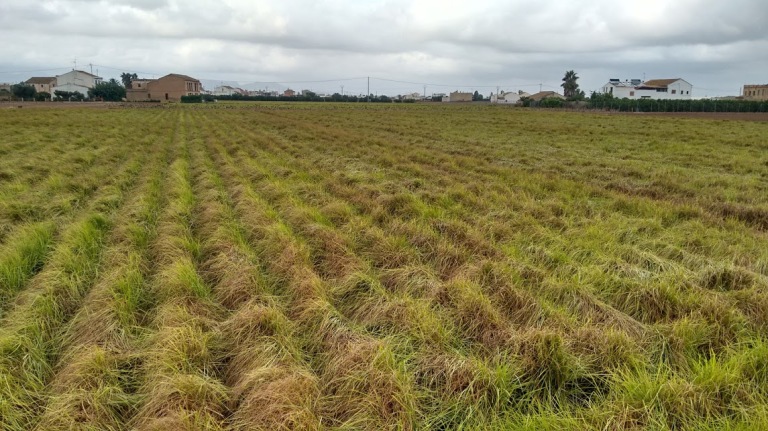
The city has one of the best Asian towns in Spain, where you can get a wide range of Chinese, Japanese, Thai and Indian food, as well as food from all over Eastern Europe which helps to give the city an incredibly cosmopolitan feel.
There are huge monuments you cannot miss
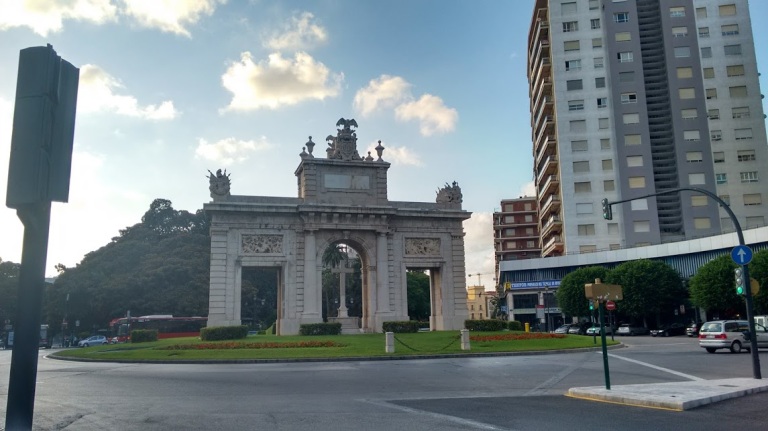
and small hidden treasures to keep your eye out for
More than anything, it as unmistakably Spanish as a Bullfighting ring.

Finally, a story: In 2014 DC Comics had a legal dispute with the city and it’s football teams over them all using a bat in both the city and football crest. They argued that they had the copyright over any bat symbol, from the trademark that they owned from Batman……. the biggest flaw in this was that the bat symbol was first used by DC in 1939, more than 20 years after both Valencia FC and Levante UD started using it in their badges,
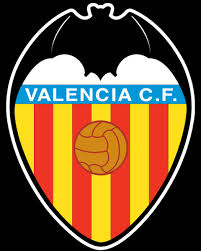
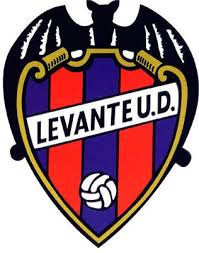
and well over 500 years after it was adopted by the city as their ancient symbol. As a result, the lawsuit went nowhere.
So the next time you are wondering whether to choose Madrid or Barcelona, take option C instead: Valencia.
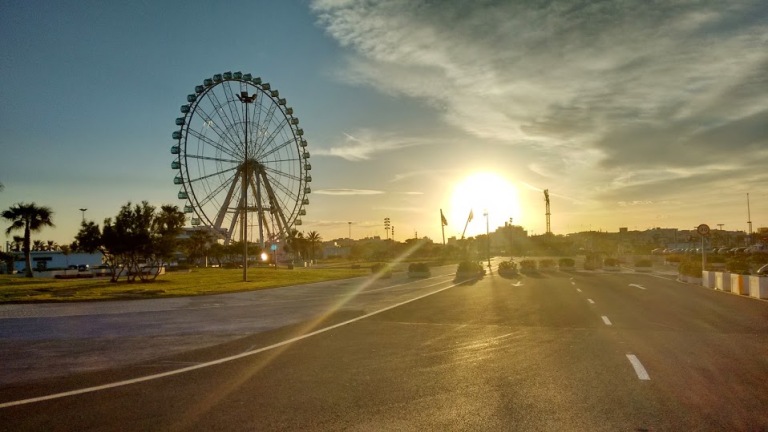

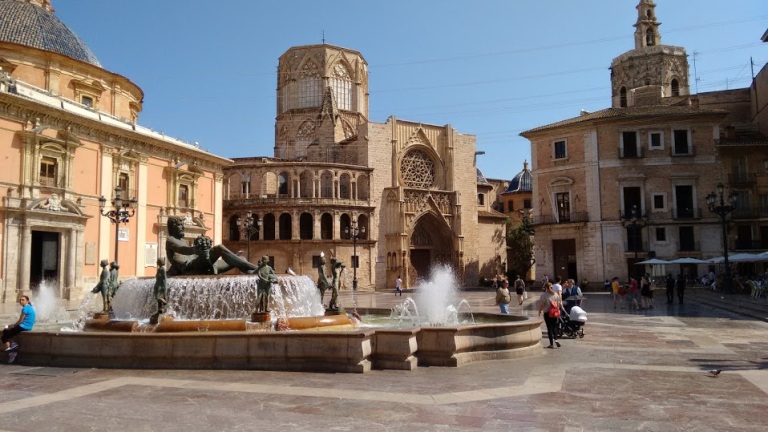
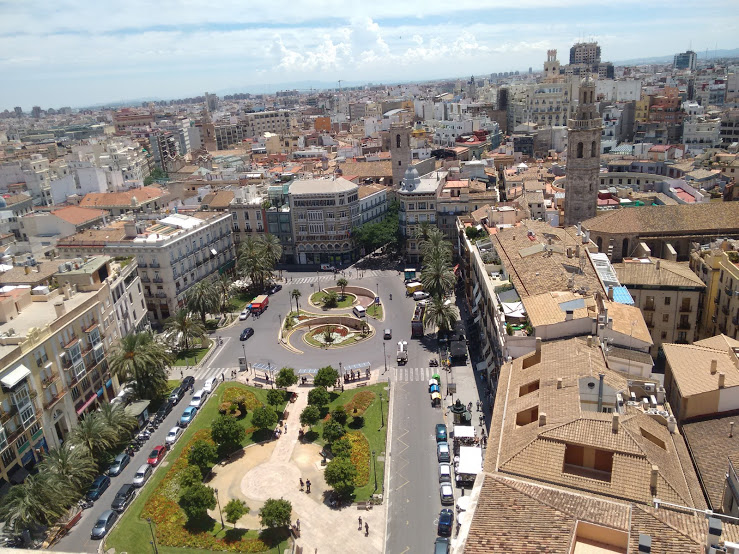
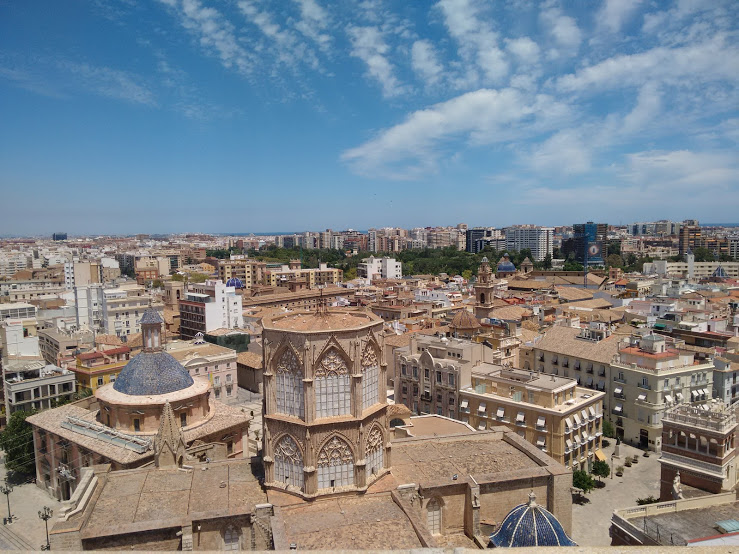
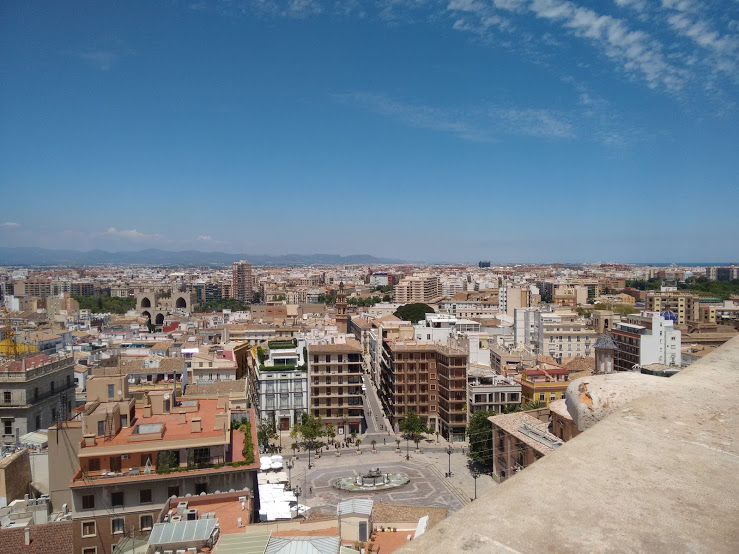
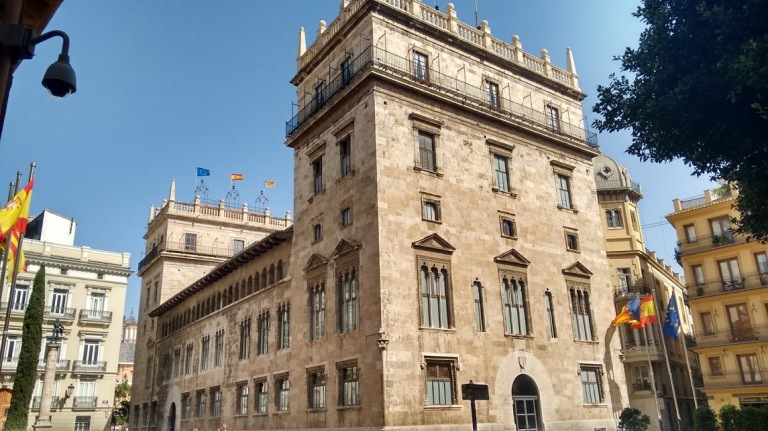
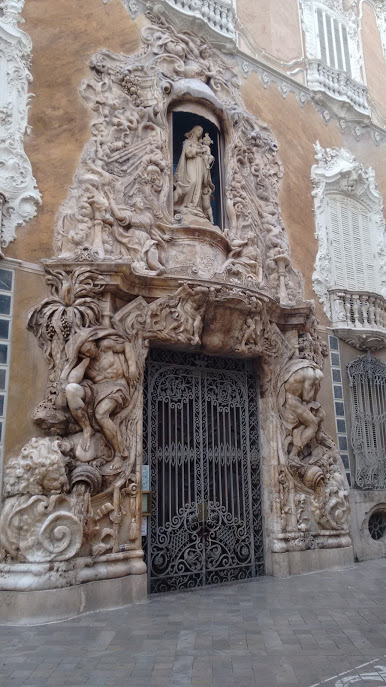

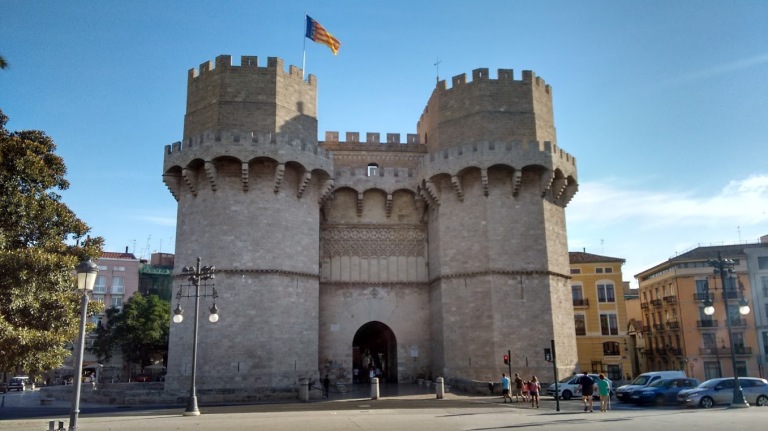
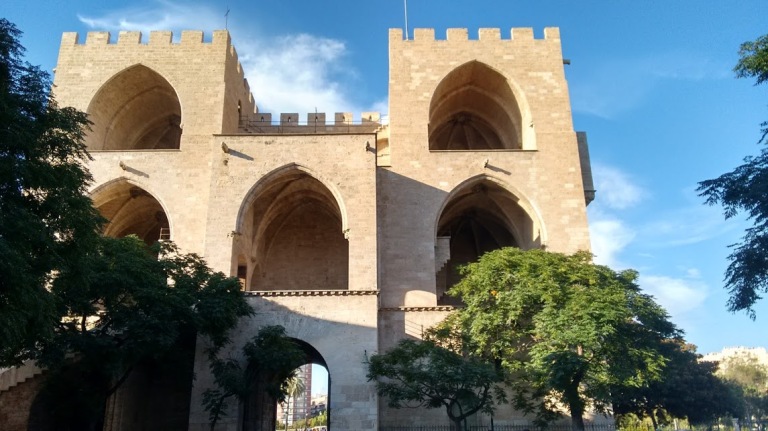
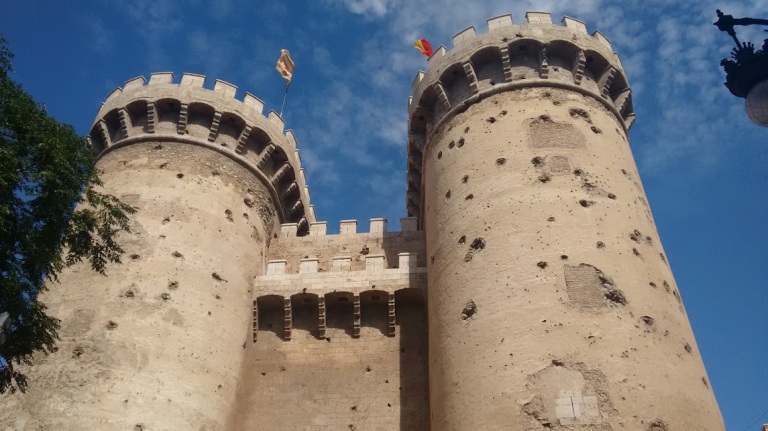
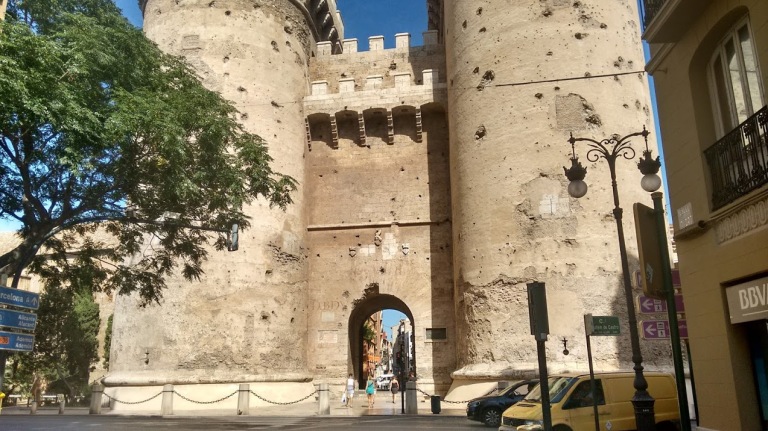
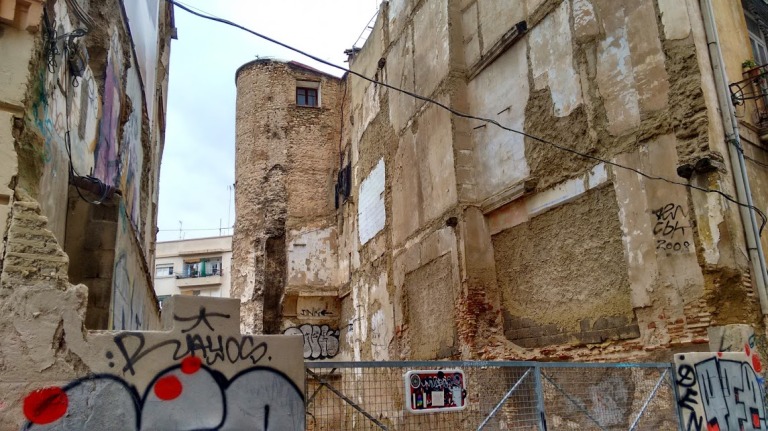
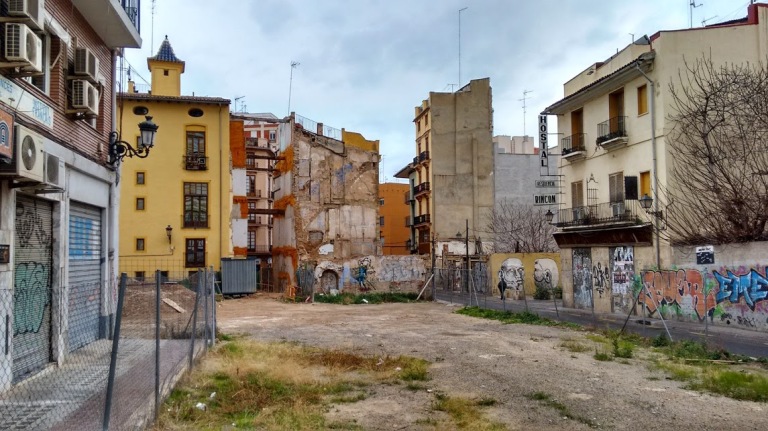

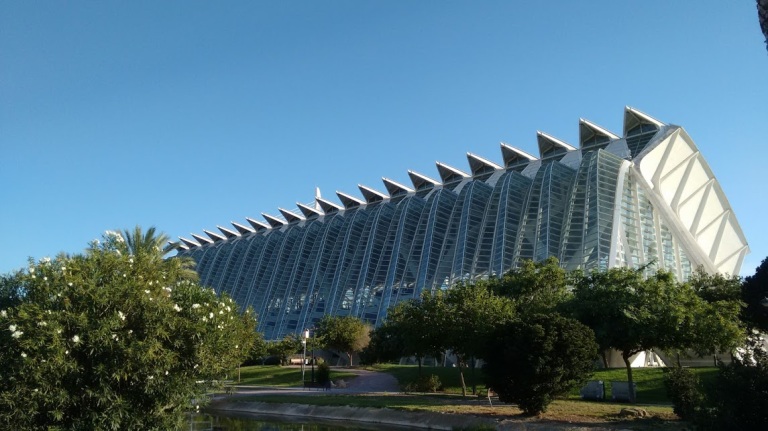
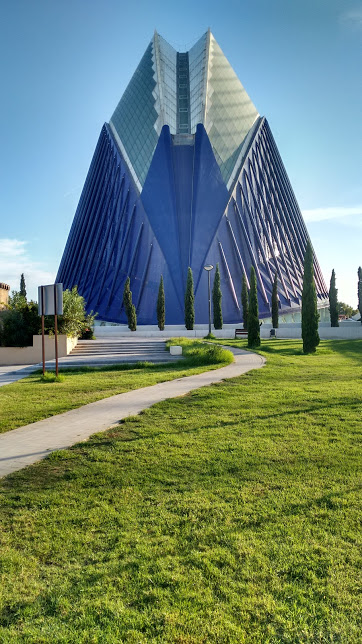
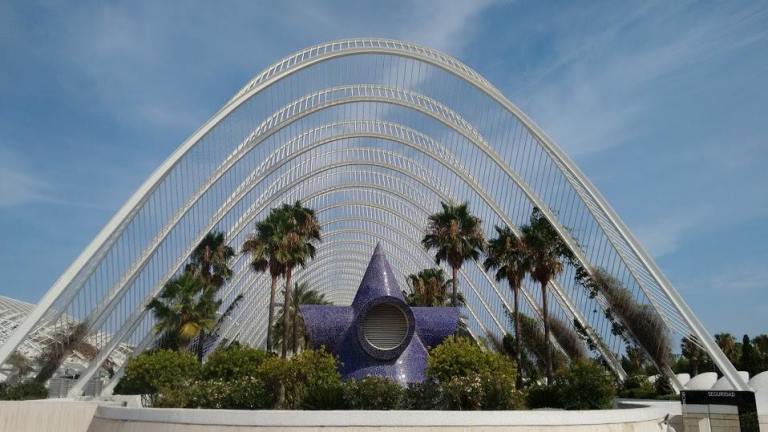
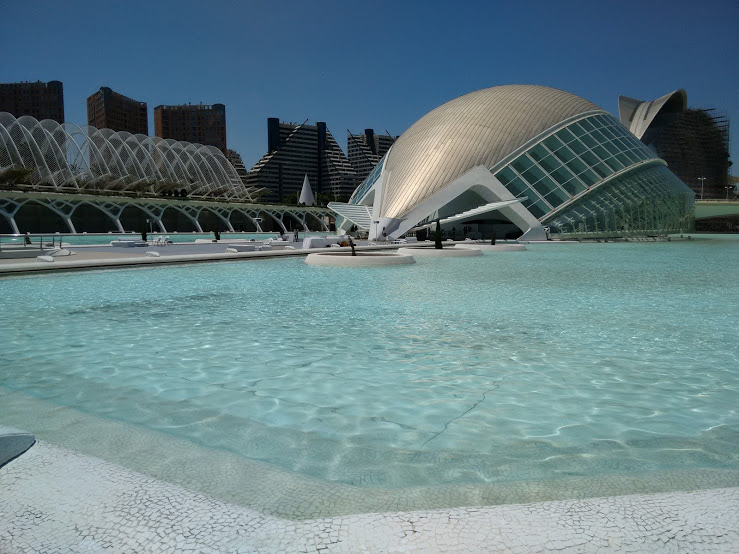






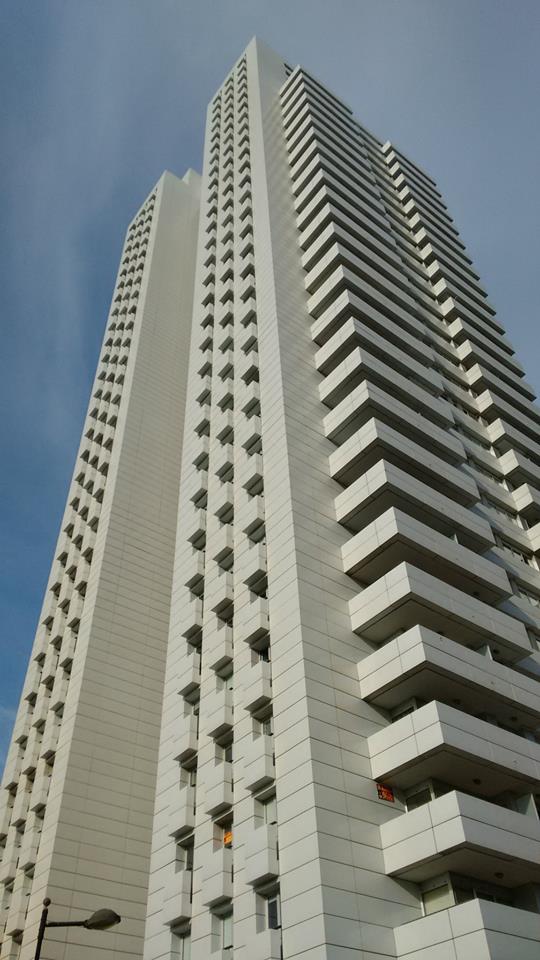

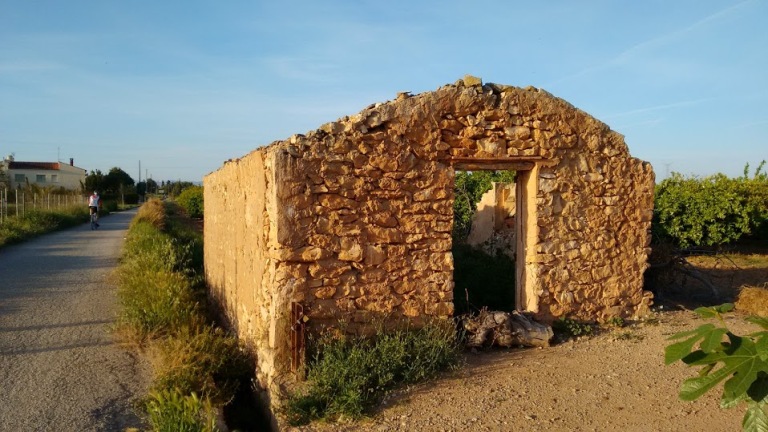
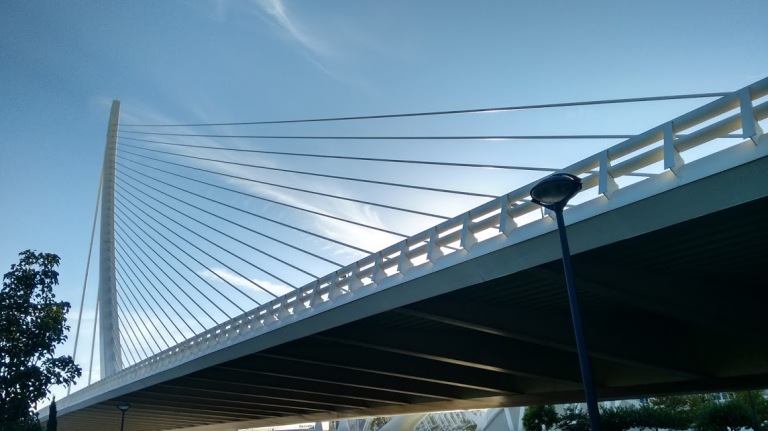
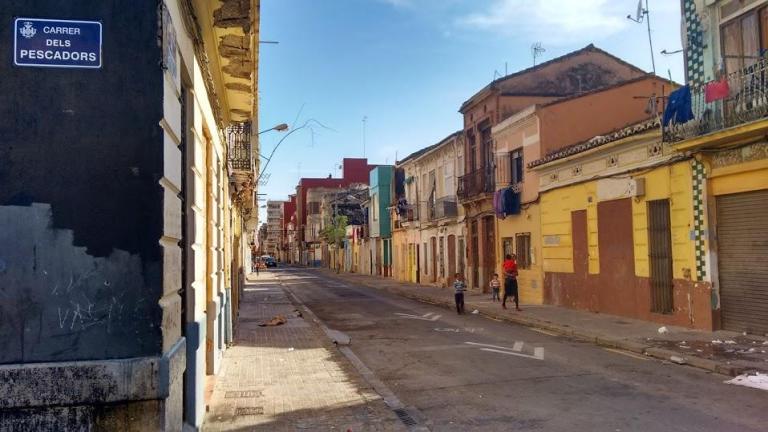
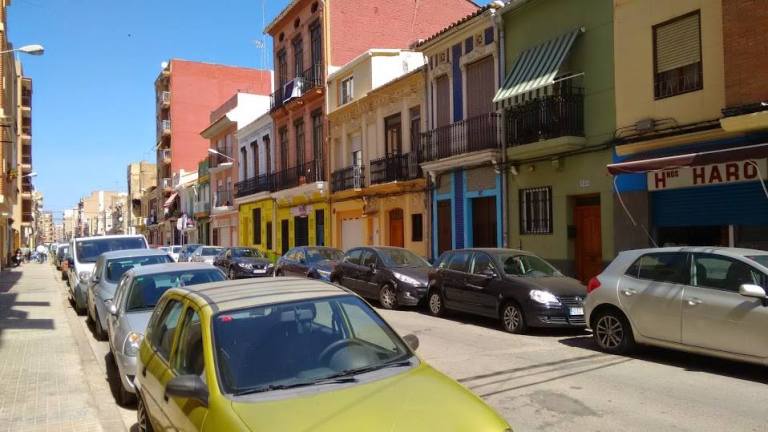
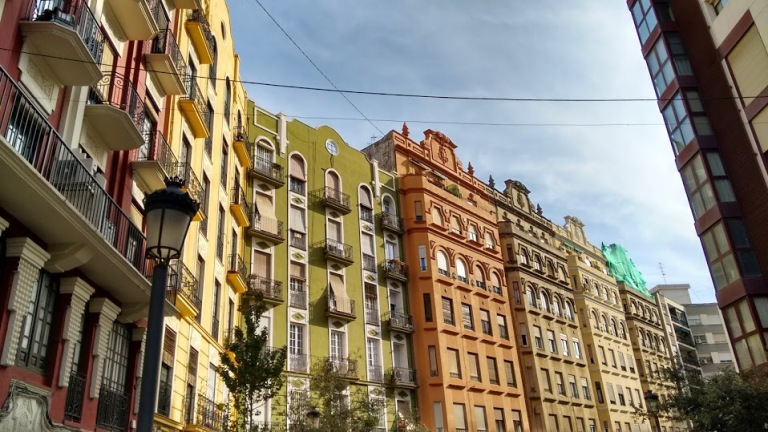
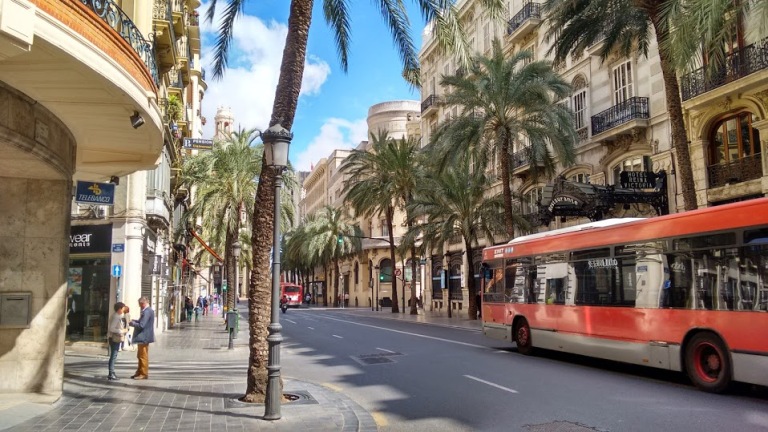
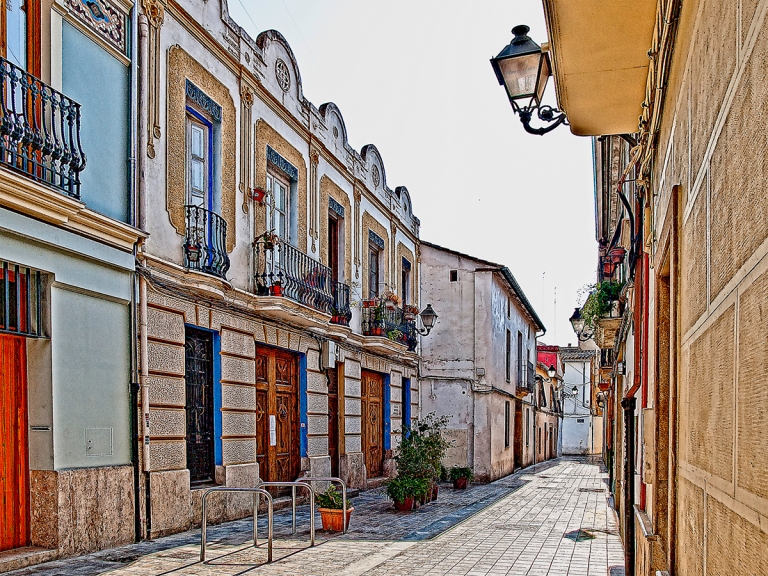
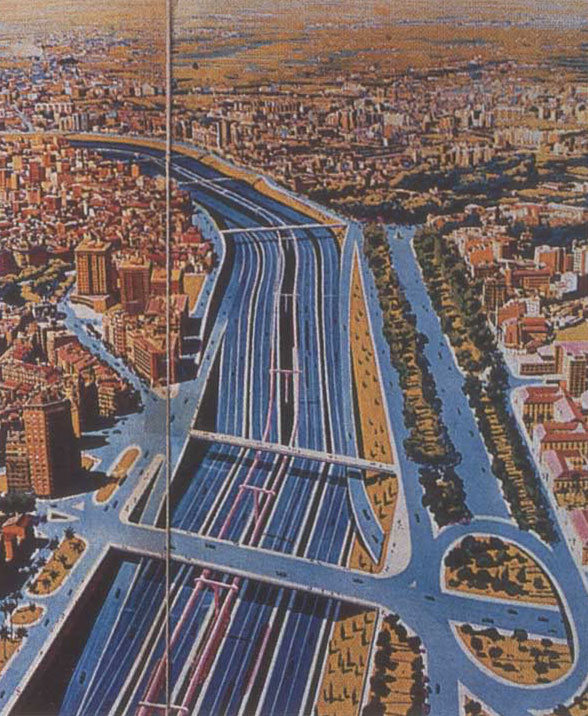










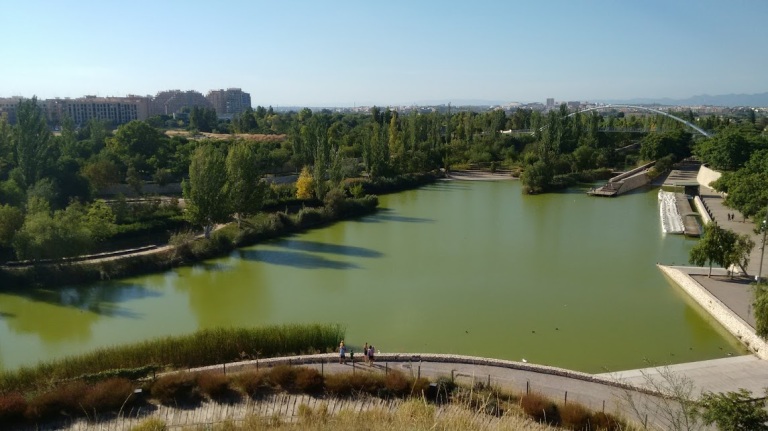
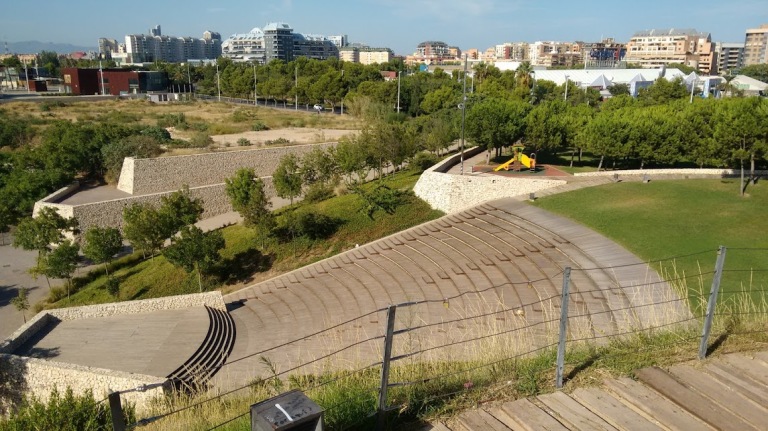
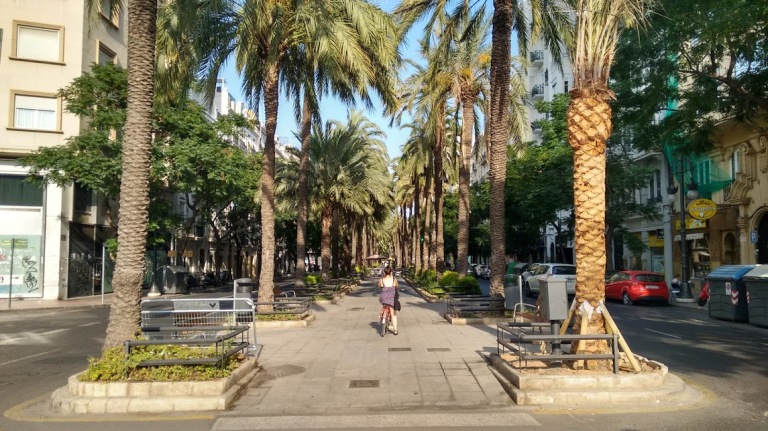
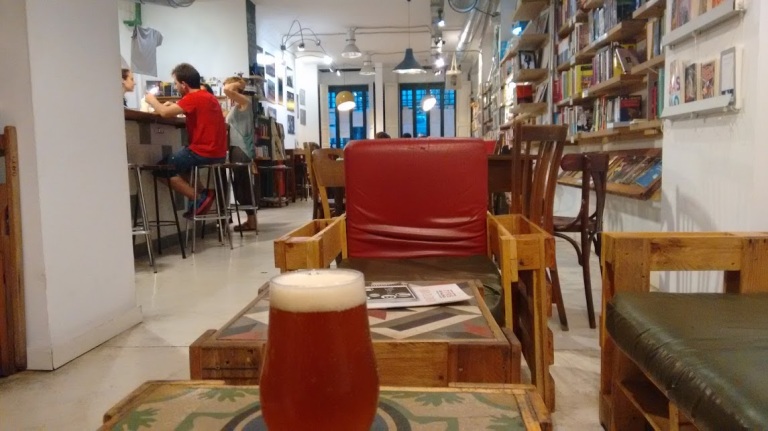
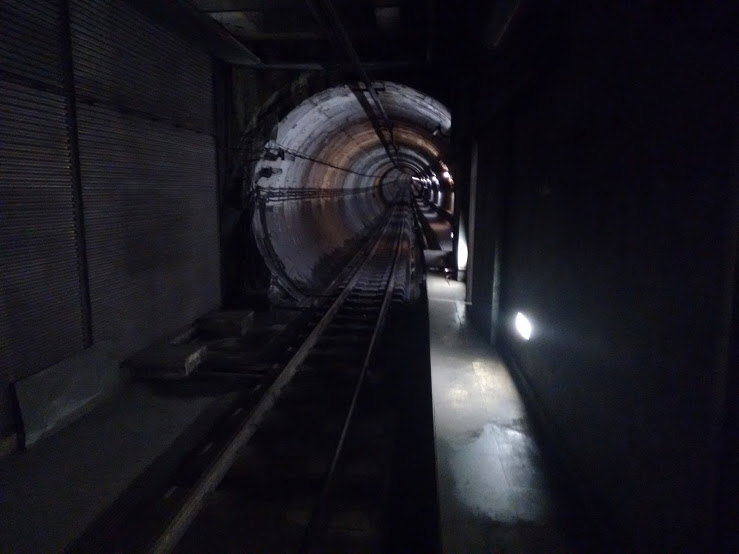

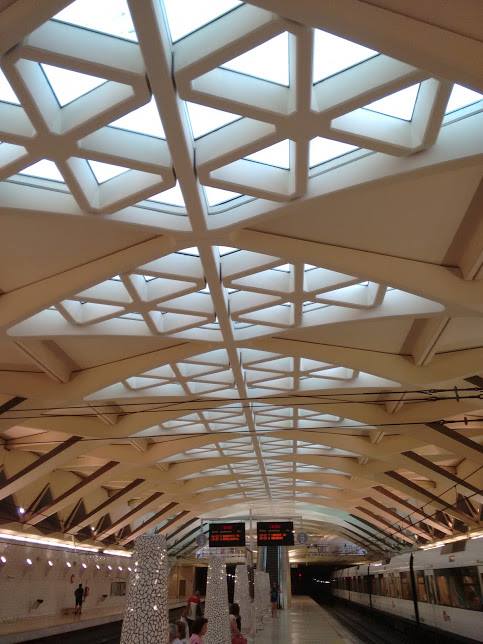
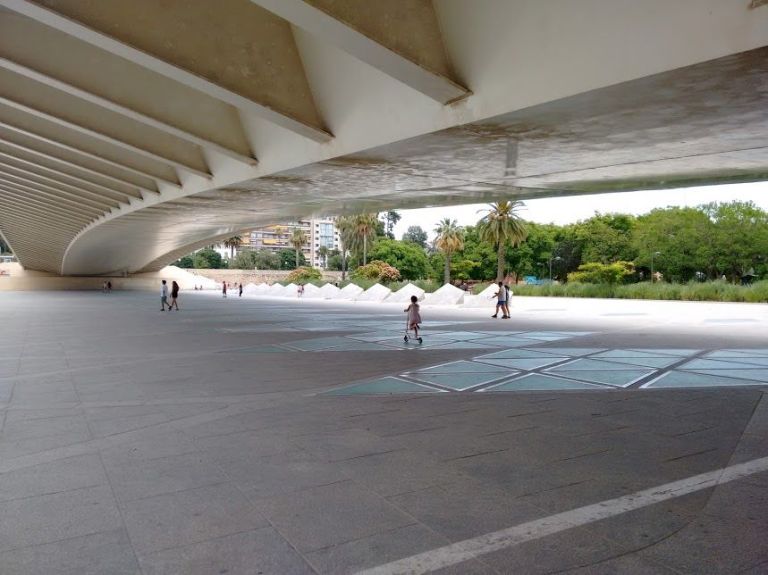
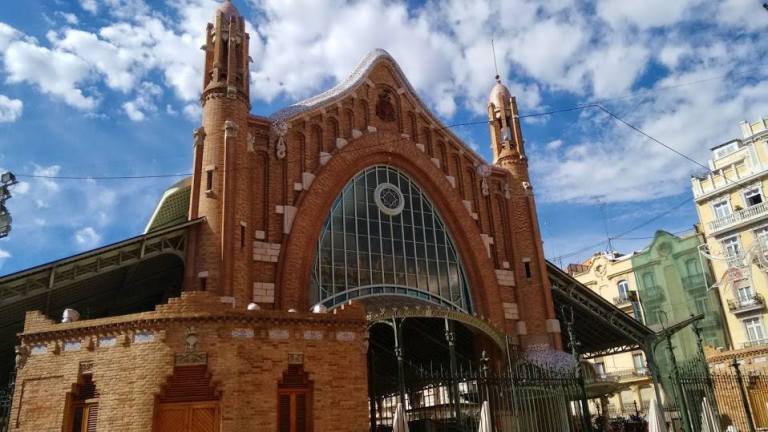

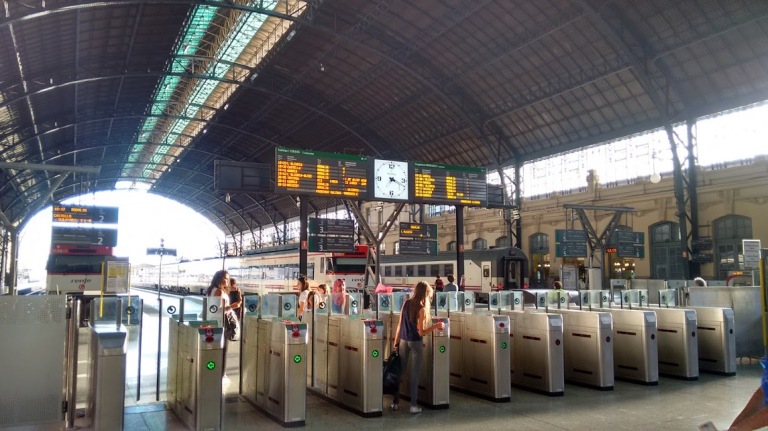
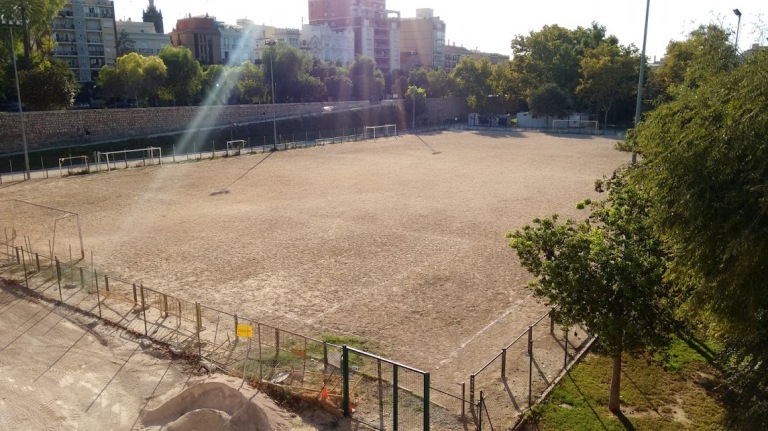

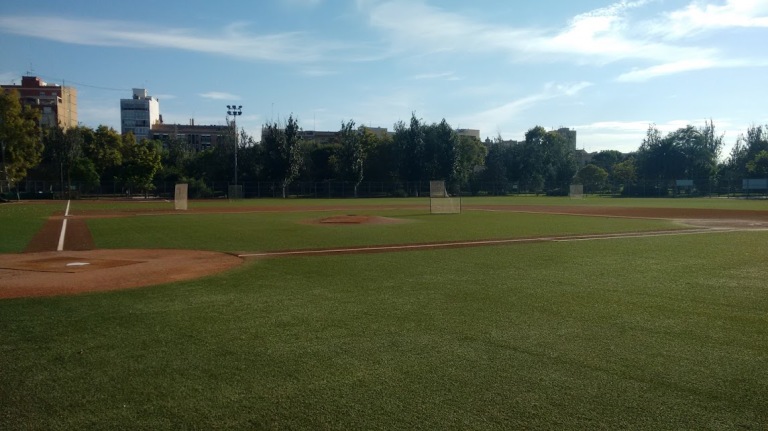
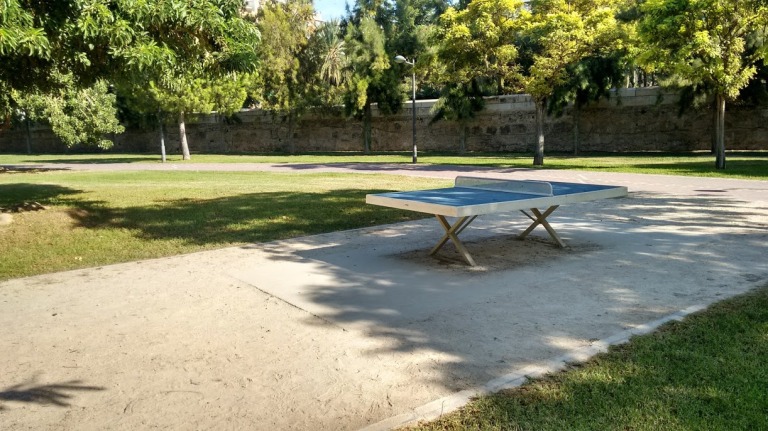
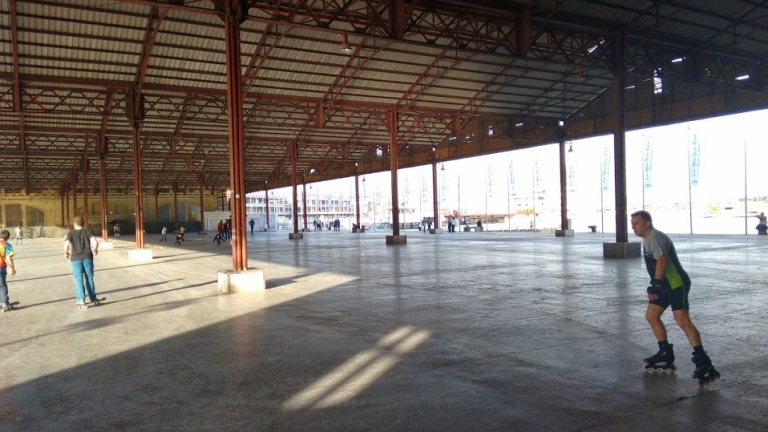
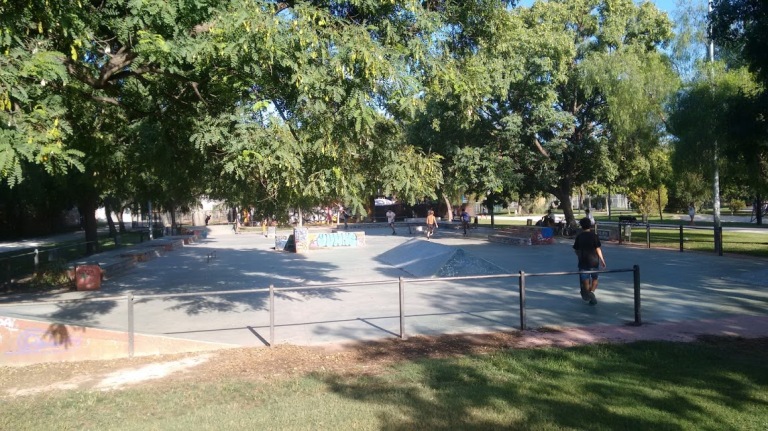
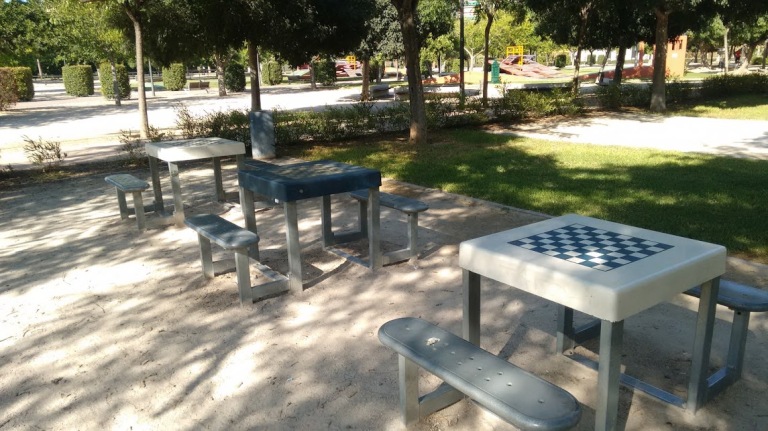
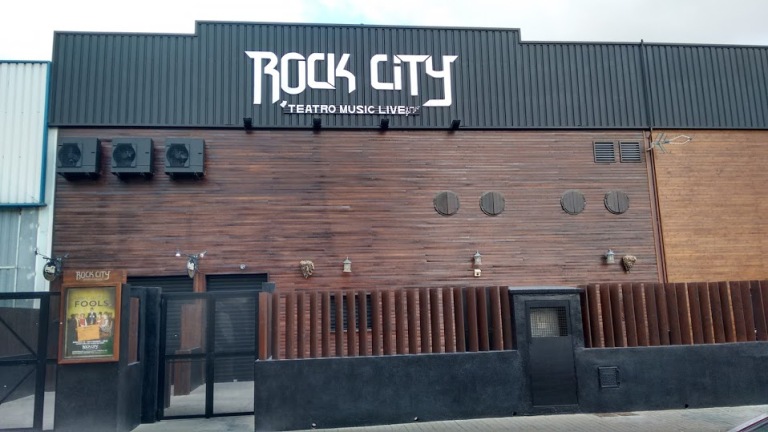
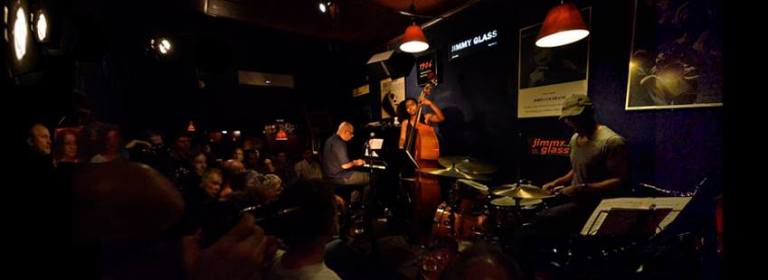
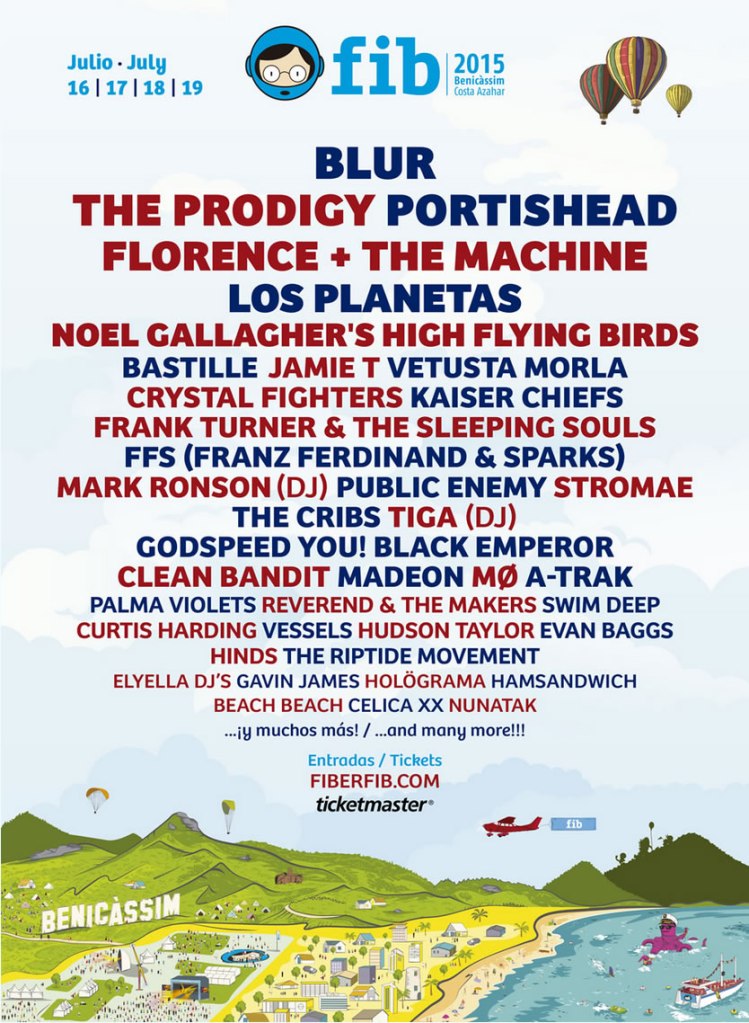
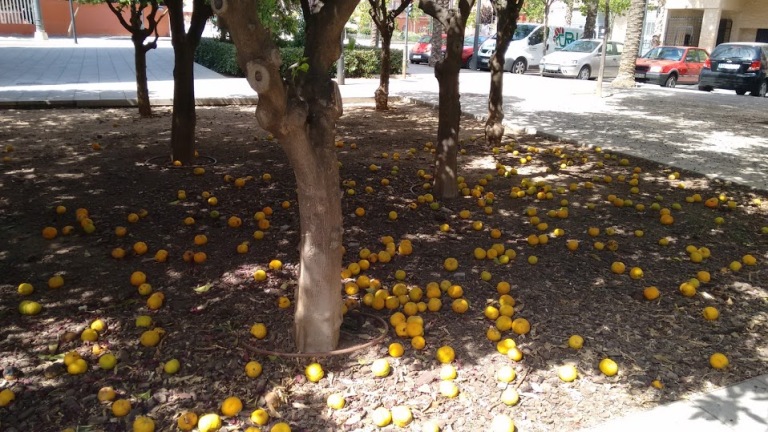
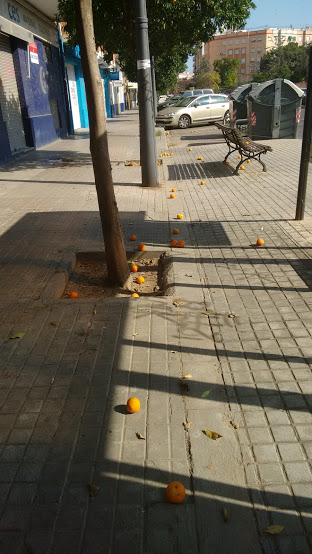
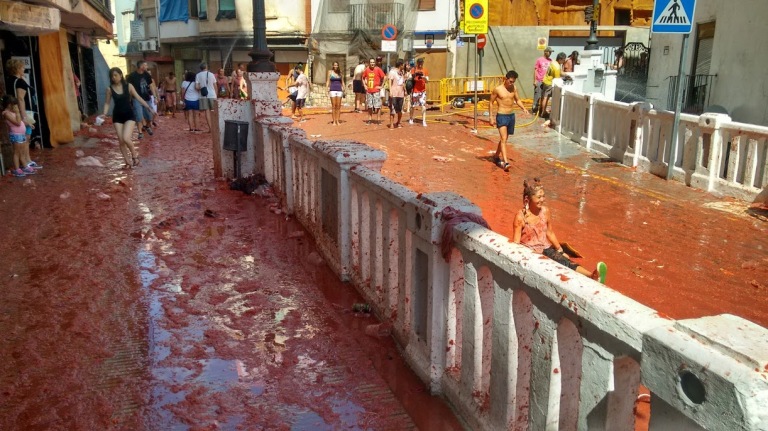
![By Photocapy [CC BY-SA 2.0 (http://creativecommons.org/licenses/by-sa/2.0)], via Wikimedia Commons](https://inspectionandprogress.wordpress.com/wp-content/uploads/2015/08/horch.jpg?w=768&h=576)
![By Manolo Gil Labrandero (Own work) [CC BY-SA 3.0 (http://creativecommons.org/licenses/by-sa/3.0)], via Wikimedia Commons](https://inspectionandprogress.wordpress.com/wp-content/uploads/2015/08/aquadevalencia.jpg?w=768)
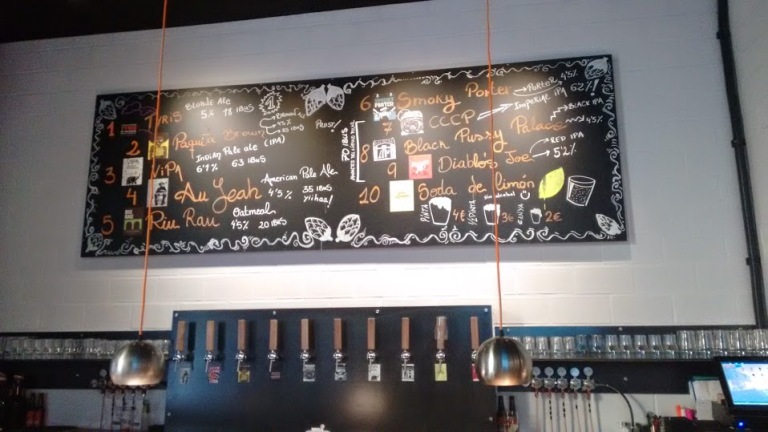
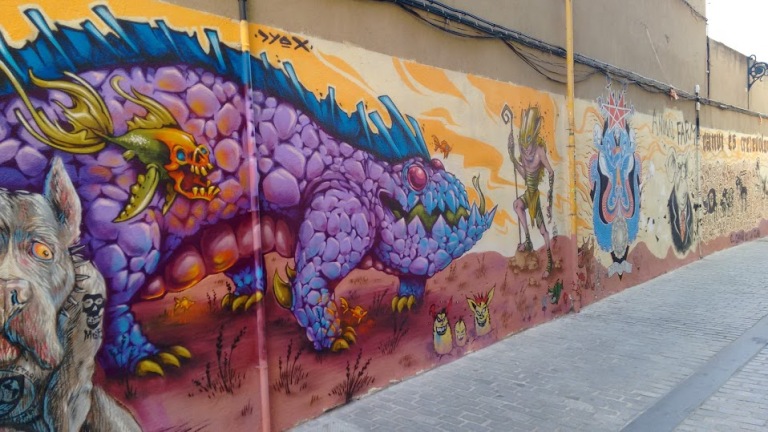
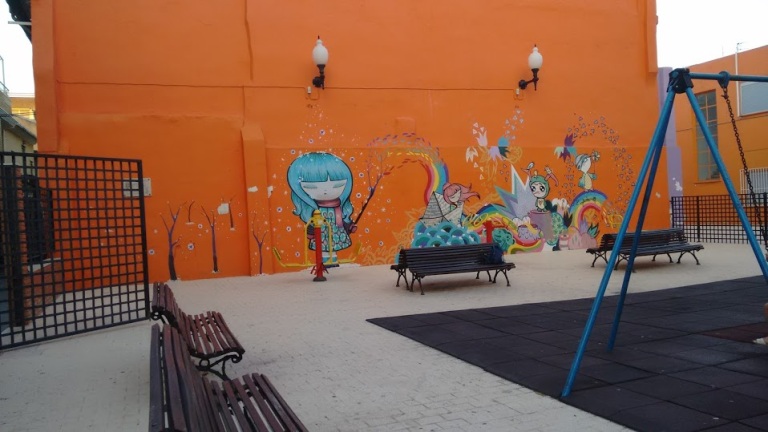
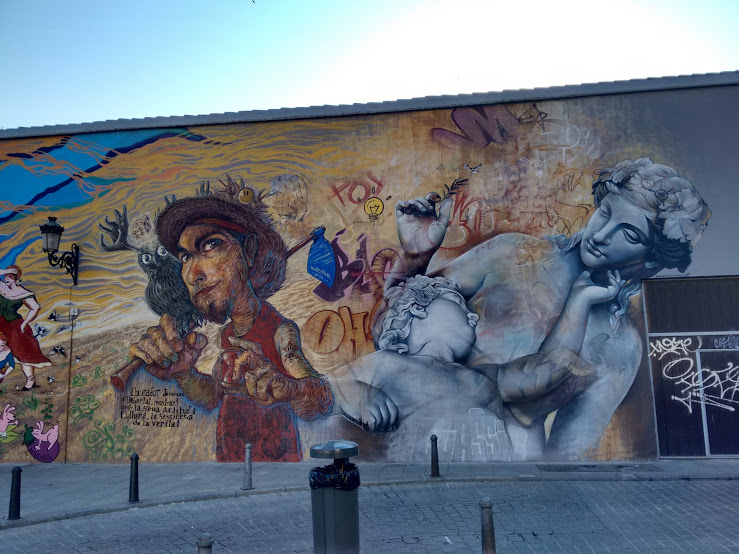

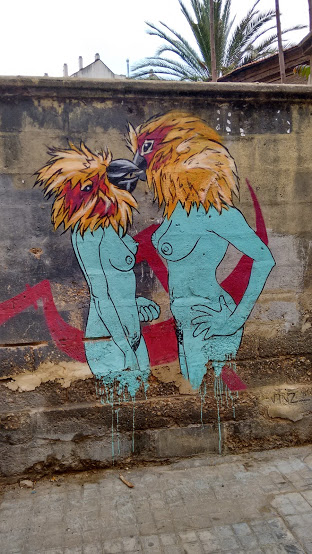
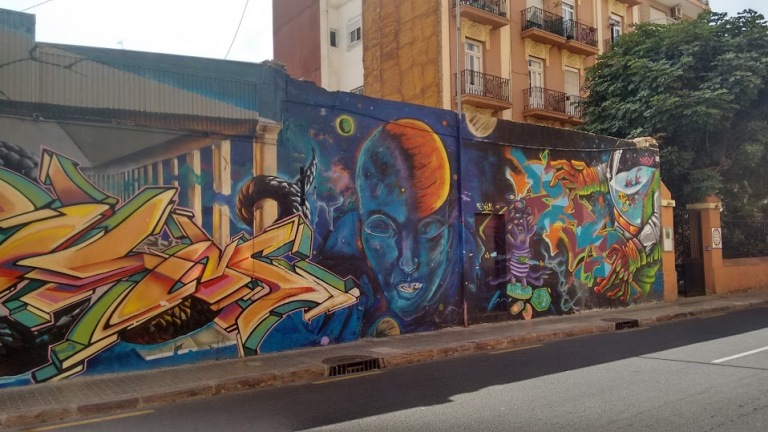
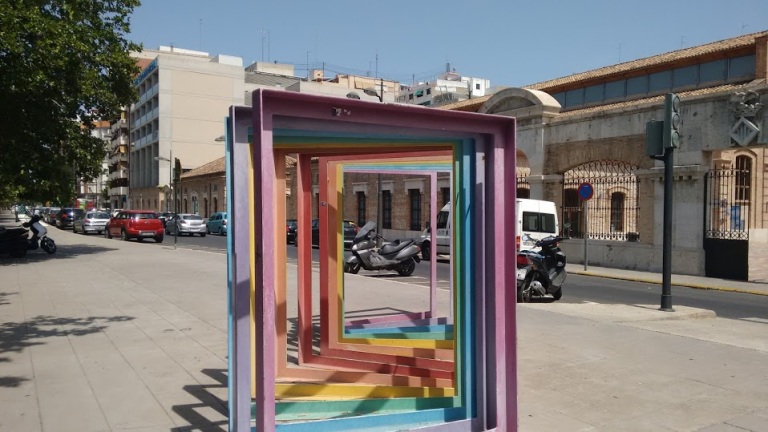
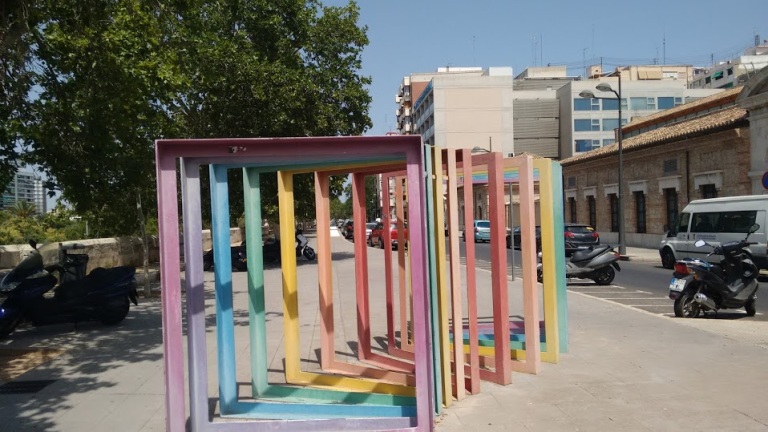
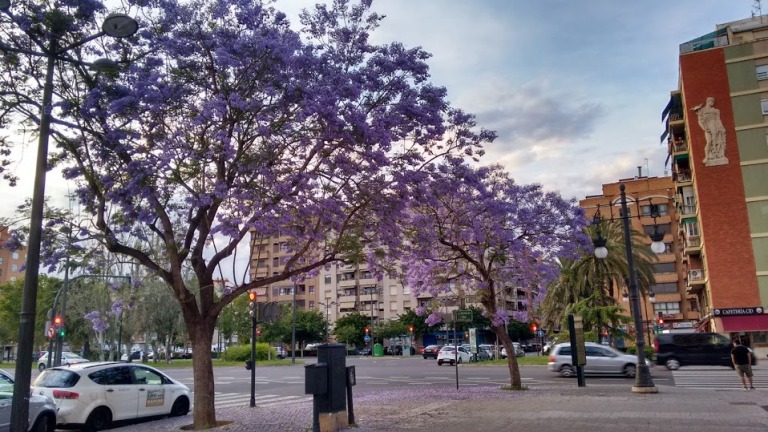
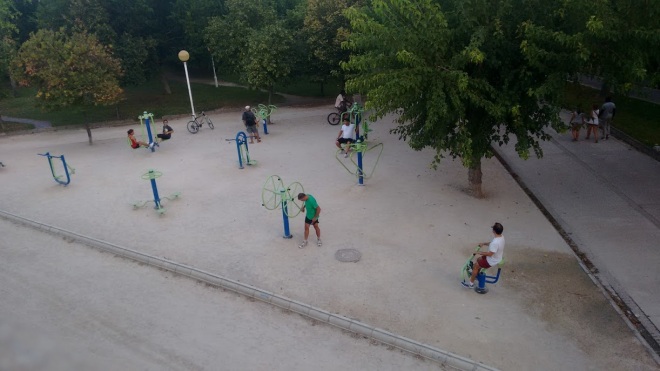
![By Kiko Alario Salom (Flickr: Valencia en Fallas-6) [CC BY 2.0 (http://creativecommons.org/licenses/by/2.0)], via Wikimedia Commons](https://inspectionandprogress.wordpress.com/wp-content/uploads/2015/08/falla_exposicic3b3_2009.jpg?w=768&h=512)
![By keith ellwood (Flickr: Las Fallas Valencia juggling) [CC BY 2.0 (http://creativecommons.org/licenses/by/2.0)], via Wikimedia Commons](https://inspectionandprogress.wordpress.com/wp-content/uploads/2015/08/800px-las_fallas_valencia_juggling.jpg?w=768&h=510)
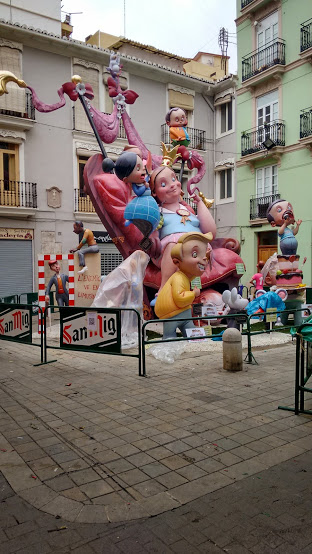
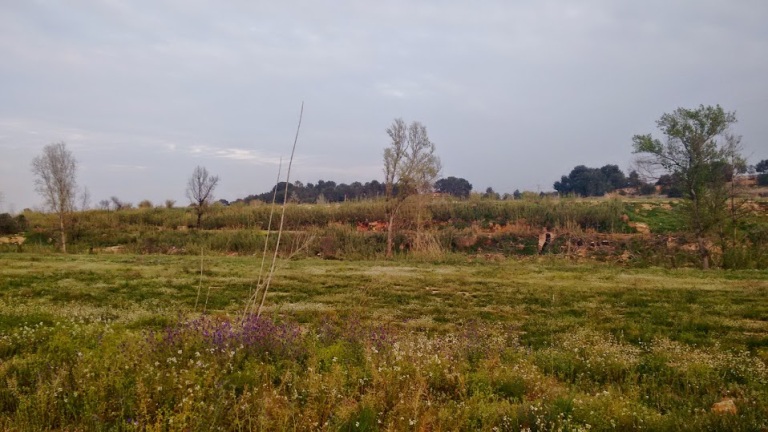

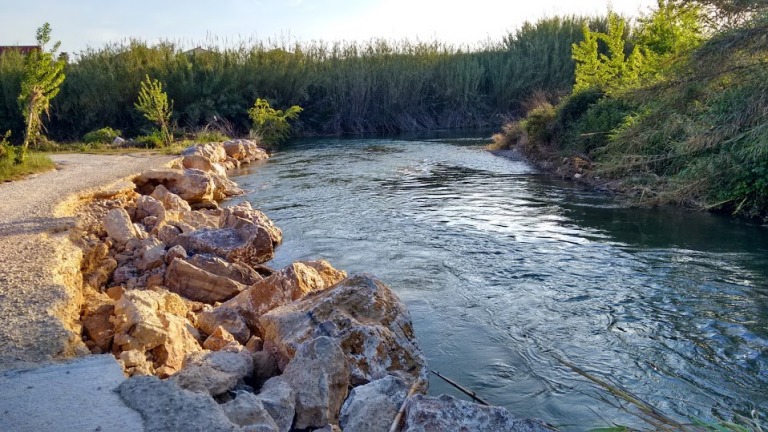
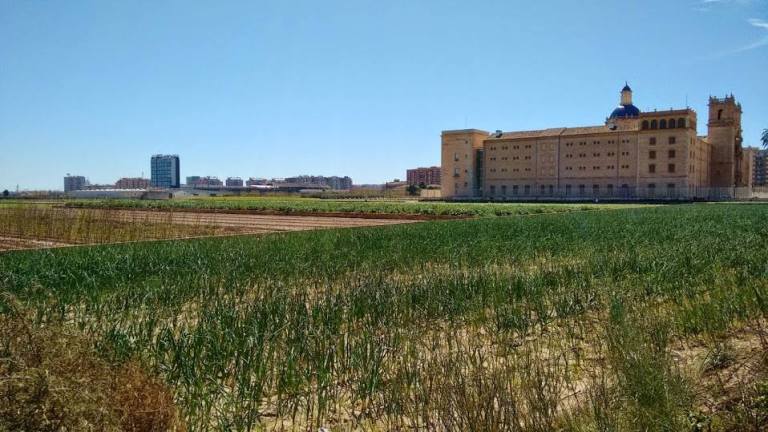
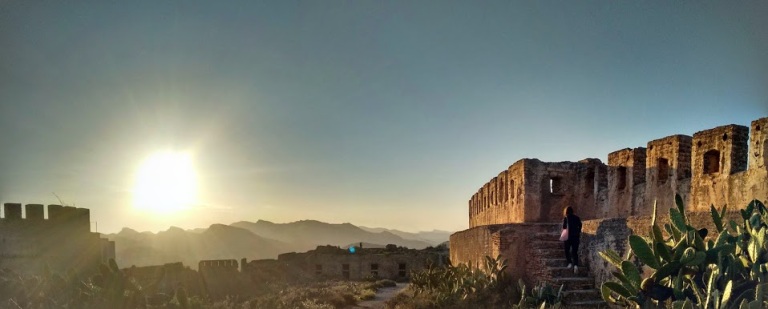
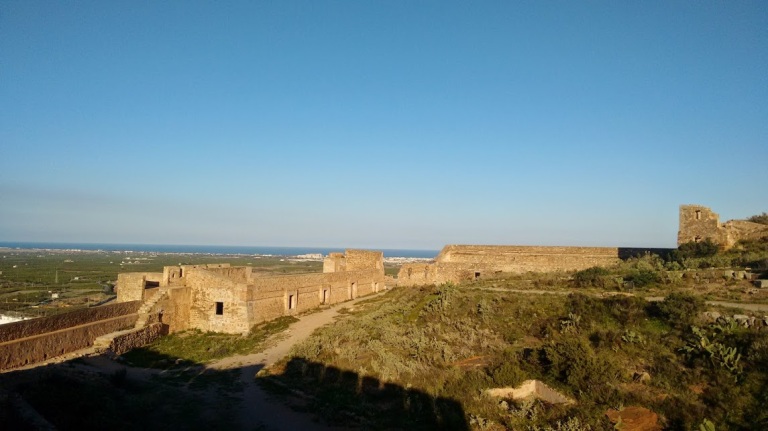
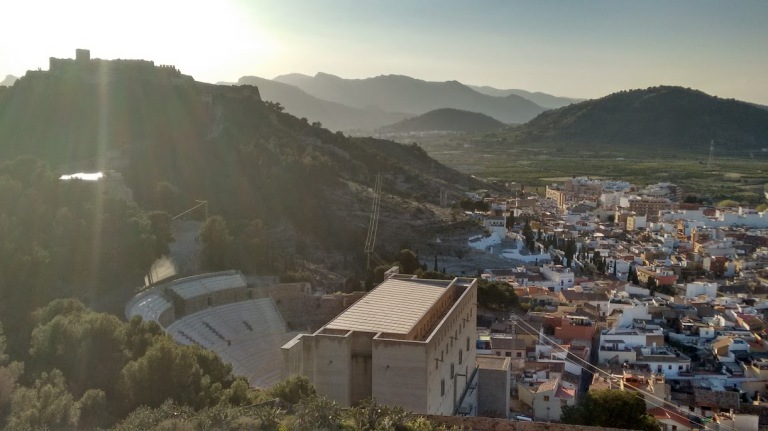
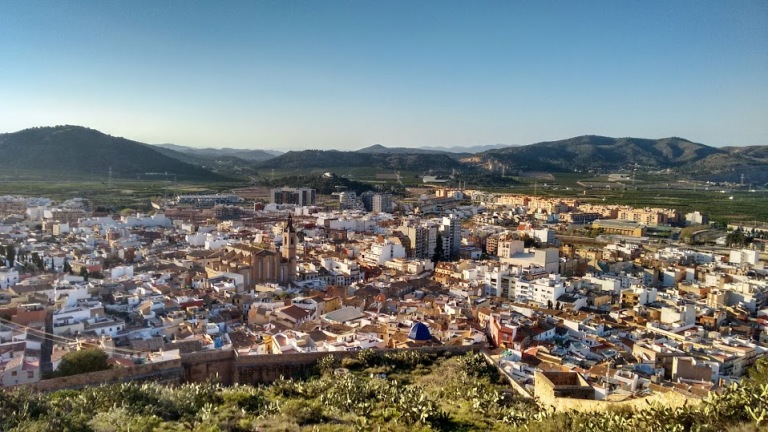

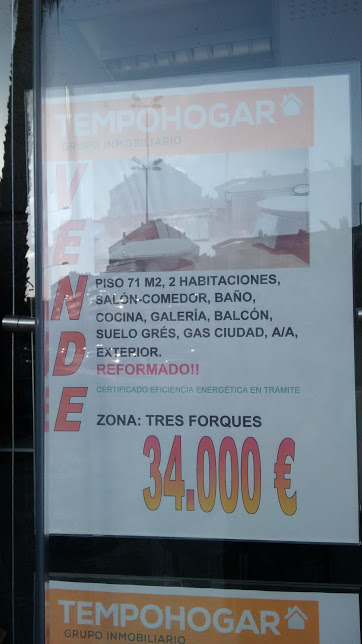
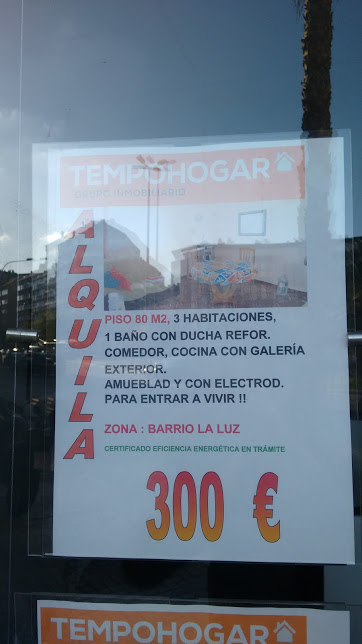
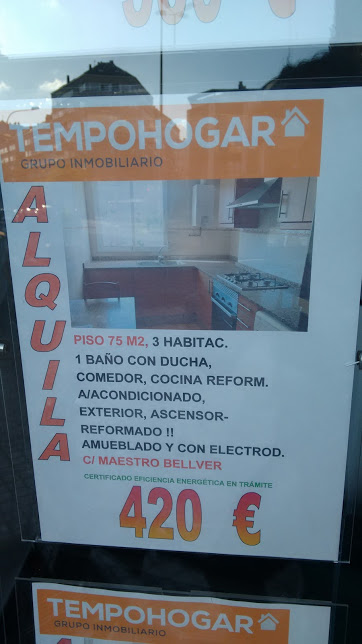

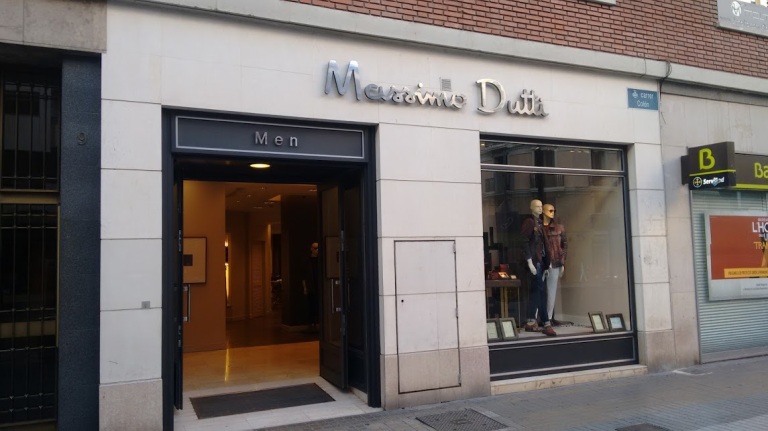

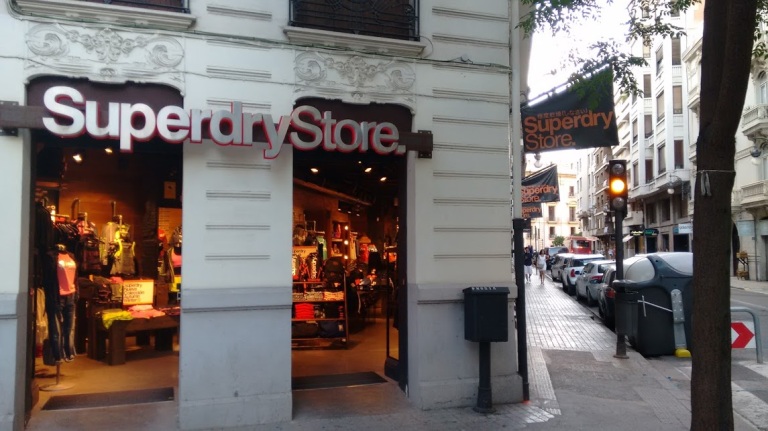
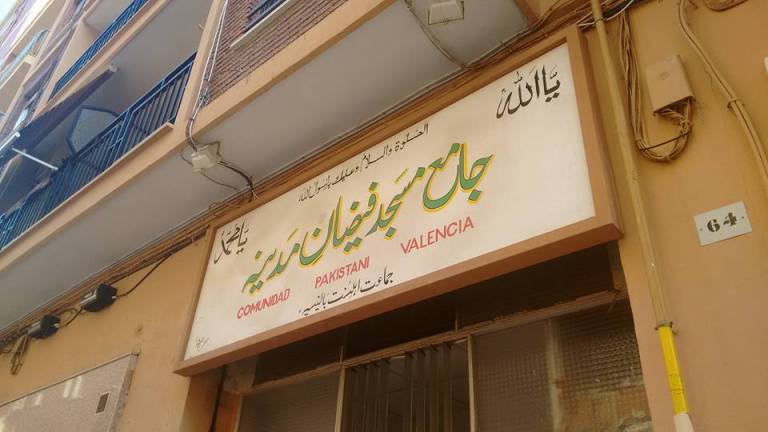
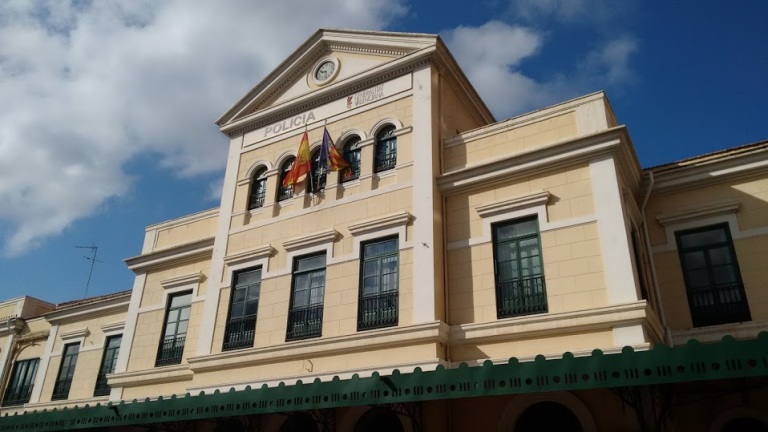
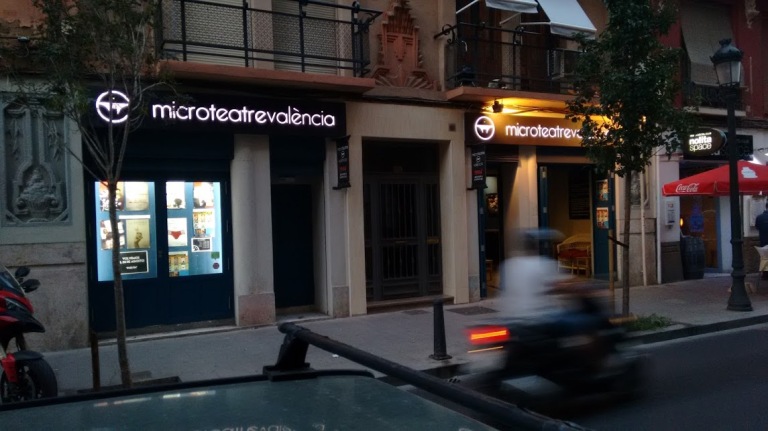
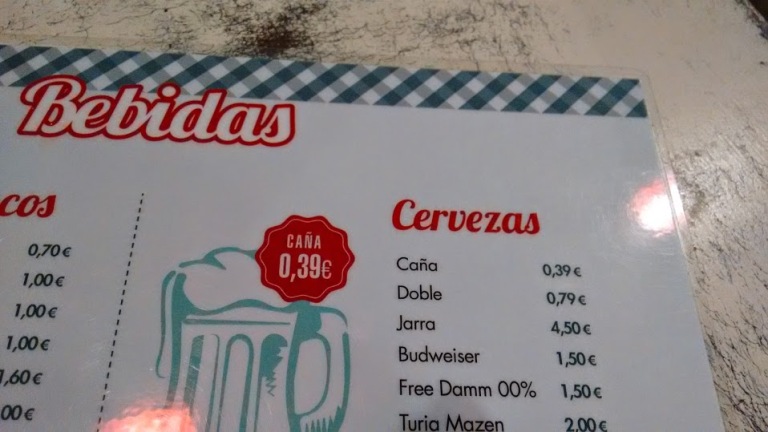

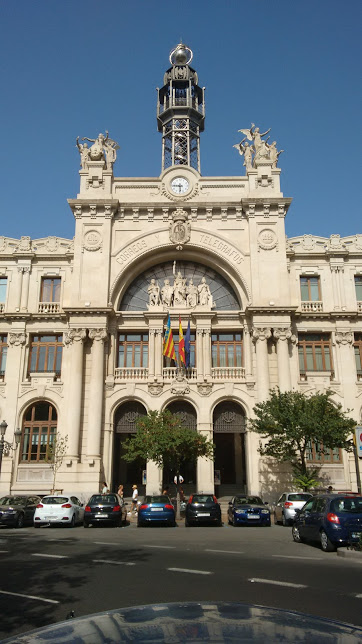
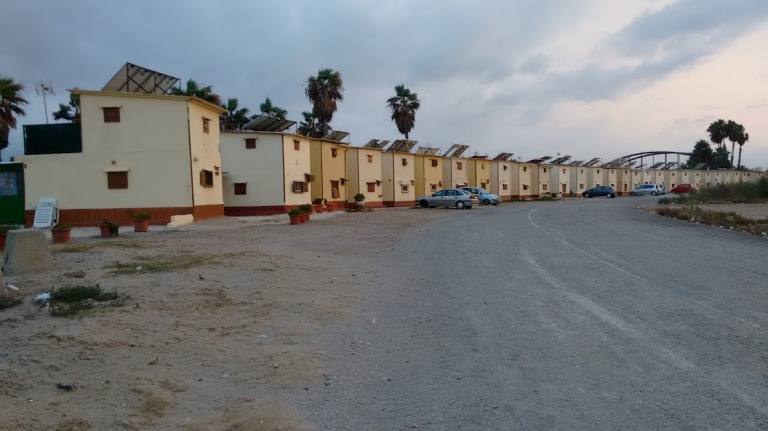

![By Marcela Escandell (Own work) [CC BY-SA 3.0 es (http://creativecommons.org/licenses/by-sa/3.0/es/deed.en)], via Wikimedia Commons](https://inspectionandprogress.wordpress.com/wp-content/uploads/2015/08/parque_natural_de_lc2b4albufera_valencia_espac3b1a.jpg?w=768&h=515)












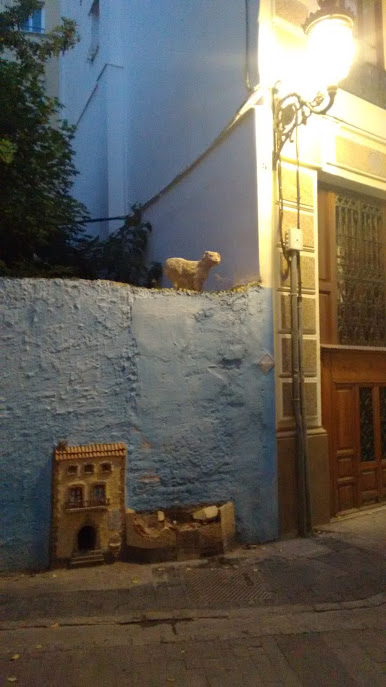
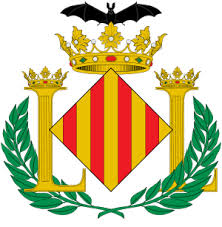
Fabulous report. I’m beginning my 6th year living in Valencia and I absolutely love it!!!
LikeLiked by 2 people
Cheers Vanessa!! 😀
LikeLike
Wow, what a great guide to Valencia! I will be using in on my first trip to this city very soon:) Thanks;)
LikeLiked by 1 person
Thanks so much, glad it was useful for you. 🙂
LikeLiked by 1 person
Best post ever about Valencia Jimmy. Congratulations.
LikeLiked by 1 person
Wow, thanks Graham, cheers! 😀
LikeLike
Is there a trail that you took when you did the walk from Riba-Roja de Turia? I’d love to do that walk while I’m here interning.
LikeLike
Yes there is, but the route from the station to the start of the walk it is not signposted. It’s easy to find though, you go to the end of Line 9 on the metro, and when you come out of the station there is a brand new tarmac footpath going in the same direction as the train was going in. (This is actually the preparation for the extension which will go to Vilamarxant in a couple of years time.) Walk down it and within 900 metres you’ll come to the main road in the town, Carrer Major. Turn right into it and you’ll walk towards the main town square, which is quite nice, it has bars, churches, the town hall, the usual things you’d expect in a small town.
When you hit the centre of town, which is Plaça de l’Ajuntament, (it’s about 200 metres down Carrer Major), you’ll be within 100 metres of the River Turia, which is actually a river as opposed to the dry riverbed that it is in the city centre. You’ll need to head in the same direction as Carrer Major lead you in, but also slightly to the right, and within two minutes you’ll see the river. Between the short distance between Plaça de l’Ajuntament and the Turia River is the Prehistory Museum of Valencia as well, which I did not visit (it was closed on the day I went there) but it is meant to be very nice, and is something else to do.
http://www.museuprehistoriavalencia.com/web_mupreva/museo_historia/?q=en
Once you reach the river you just follow it the whole way in. It has a good footpath and signposts, benches along the way, lots of bridges crossing over the river so sometimes you walk to the left of it and sometimes on the right, and plenty of places to stop. After 24 kms you’ll reach the town of Quart De Poblet where you can get the Metro into town, it’s in zone 1 and takes about 10 minutes to reach the city centre, or you can follow the street signs from here into the city centre via Mislata where it will take you an additional 50 minutes to get to the Bioparc area of the renovated Turia. That last bit of the walk is not as nice though as it is walking through towns and cities instead of through nature. It’s not bad at all, but it is not a nature walk, but you do get to see Mislata which is officially one of the most densely populated areas of Europe, so if you are interested in city planning that’s an interesting part of town. Less so if you are not.
If you look on a map you can see that the Metro stop Rosas is about 2kms before Quart De Poblet, so you can also get the Metro from there if you want to take 2 kms off of the walk. Also, on a map you can see La Presa station on Line 9 which is along the route, which is 8kms away from Riba Roja station and some people that I have spoken to have thought about starting the walk here instead to make it a bit shorter, but you miss out on the best part of the walk by doing this (the part between La Presa and Riba Roja) and if you choose to use this station it is REALLY difficult to find your way unless you know where the exact directions, so I would really avoid using La Presa station. It was built last year, and instead of locating it in the centre of town they tucked it away to the side of the town where you have to use tiny residential roads to find it, with no street signs, etc, so it is very tricky to find. Thankfully if you use the other stations when you are walking by the river there are loads of signs that tell you where the metro stations are, it’s very well signposted which is very handy.
LikeLiked by 2 people
Thanks man!
LikeLiked by 1 person
Thanks very much for this excellent overview of Valencia! The descriptions and photos are thorough and fascinating! You did your adopted city a kind service by creating such a noble rendering. My family of 3 and I are considering spending a few months to a year in Spain, 2016-2017, while our Spanish-speaking 8-9-year-old son is in the equivalent of American 3rd grade. Right now, Valencia is my top choice, though my husband also wants to explore some smaller cities. (I say, choose vibrant, livable Valencia and visit the others on weekends and vacations by train, plane, or rental car!) Thank you for being an important part of our Valencian introduction!
Catherine of Portland, Oregon
In the beautiful Pacific Northwest of the United States
LikeLike
Thanks Catherine, that’s really kind of you. 🙂 I think that Valencia is a great place to choose as there is also a train that takes 1 hour 40 minutes to get to Madrid, it’s less than 4 hours from Barcelona, you can get cheap and very quick flights to Majorca, so it’s a great base to use to explore the rest of the country. Plus I think that Valencia is a great place to be speaking Spanish as well, as in Sevilla (for example) I find the accent a lot more difficult to understand, in Barcelona you end up picking up lots of Catalan words without realising, ( I had to learn that the hard way…..) and the same applies in the Basque Country, Galicia, etc. So I think that Valencia is a great place to be immersed in the language. Hope you have a great trip. 🙂
LikeLike
Fantastic! I have recently moved to Valencia and this has given me loads to look out for.
LikeLike
Thanks, glad that it was of use to you. 🙂
LikeLike
I’m so excited with this post! I’m naturally from Valencia and I’ve found this amazing! You’ve done a very beautiful description of my loved city. I’m glad it has conquered your heart 😉 I hope others have the curiosity to visit us and enjoying their time here!
I’d like to suggest to you, and who’s curious, to go lunch to the restaurant Les Tendes. You cannot reach it by public transport but if you have the change to go by car you’ll like it! It’s in the middle of “chufa” lands (Chufa, what you use for make Horchata) in Avinguda del Mar, 59, 46132 Almàssera, Valencia. They cook our best rice dishes at the traditional style and what can be more interesting for tourists is that you can order the type of rices, including paella, just for one; in most of restaurants, for ordering a paella you need to be at least two. If you go there, and you’re four, your can order 4 different type of rice dishes.
Thanks for sharing your thoughts about Valencia!
LikeLike
Thank you Clara, that is very kind of you to say that. 🙂 I ave walked past your restaurant actually, as in the article when I write about there being farmland in Valencia, the photo of the field was taken on the road that you are located on. I got the Metro to Almàssera and then walked to Port Saplaya, which only took me 30 minutes, and it was a very nice walk, past lots of tractors and fields. 🙂 (I’m of Irish heritage so I like countryside and tractors. 😀 ) The next time I am in the area I will pop into Les Tendes, thanks for the advice.
LikeLike
Hi Jimmy
Great report!
Can you bring a bicycle on the metro if you want to go to Riba-Roja de Turia?
LikeLike
Hi Aine, thanks very much! I’m not sure what the official regulations are on bringing the bicycles on the Riba Roja walk, but I have seen many many people bringing their bikes on the Metro without any problem, and have seen the guards check their tickets and not mention anything about the bikes as well, so I would assume that it is allowed. Hope that that helps.
LikeLike
Jimmy, if I wasn’t sure about moving to Valencia before reading this, I sure am now afterwards!
I do wish however, that you would wite a little bit more about the Valencianas. How are they compared to other Spaniards, what different “types” of Valencianas are there, what type of jobs are there in Valencia (mostly), how do they live, how are they drunk and what do they think of us guiris? I’ll be starting my año sabatico soon and I can’t wait to have a bottle of Turia next to the Turia!
Good work!
LikeLiked by 1 person
Thanks Sebastian, much appreciated. 🙂 Yes, that’s a good point, and I did think about whether to write about that aspect as well, but in the end I decided against it as I asked about 8-10 of my friends what their opinion of Valencian people was, and there was a different reply from each person. This was because not only does each person have a different social group and therefore they all meet different people, but also because each person has a different opinion on people. For example, one person may say that someone is “reserved and quiet”, another person may call them “boring.” While one person thinks that someone is “energetic and full of energy”, other people may say they are “annoying.” So I thought about including information about the people here, but in the end I decided against it in case I misrepresented people and gave a biased opinion.
However, the people here are very welcoming to guiris/foreigners, much more so than pretty much every other city I have been to. I have also lived in Sevilla and whilst it is a very nice city and the people there are lovely, my personal experience is that it is very difficult to integrate there fully unless you completely understand the culture there, which can take a long time. In Sevilla if you want some breakfast after a certain time it’s very difficult to get it – Sevillans eat at a certain time, and other people are expected to follow that which is to be expected, but it is also difficult for some people to adjust to. By contrast yesterday I got a Tostada with Tomato and Jamon on the way back from the pub, with the owner not being bothered at all despite it being about 12 hours after breakfast stopped being served. I’ve also stayed for many months in Barcelona and find that my lack of Catalan holds me back there at times.
I have known friends who could speak Spanish fluently to a high standard that found it hard to make friends in Sevilla and Barcelona, and in Sevilla there were certain roads reserved for the erasmus bars with other bars preferring to keep a local clientele instead, almost as if they wanted to keep the erasmus students out of the way. But in Valencia I have friends who speak very poor Spanish (whilst taking lessons), and the shop keepers are much more happy to help them out, and there are also many bars that are happy to have 20-25 erasmus students drinking in it alongside the locals, with them all being made very welcome, so there’s much more integration between locals and foreigners. I think because it is a port city there is a huge acceptance of foreigners that is much more than you can accept, and it was part of the reason that I chose to live here. On the other side because Valencia attracts so many foreign people it also means that it’s harder to pin down what a typical Valencian person is, since each person brings a different attitude and culture with them and so there is less of a “typical Valencian”. Plus, for example, in Bunol the people are very different to, say, Torrente, each different town/part of the city has a very different feel to it. But on the whole I find that the people are very nice, welcoming and accommodating, and I can honestly say – hand on heart – that there has not been a single time that I have felt unwelcome here.
Congrats on choosing Valencia, hope that you have a great stay here. 🙂
LikeLike